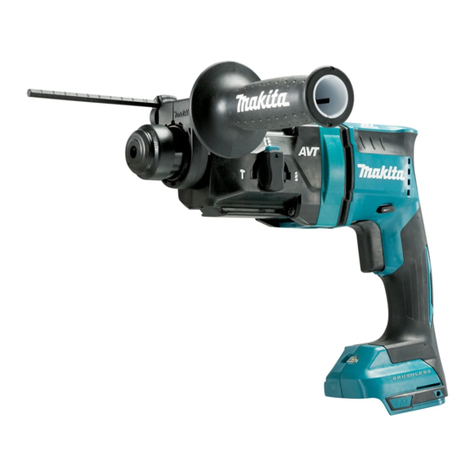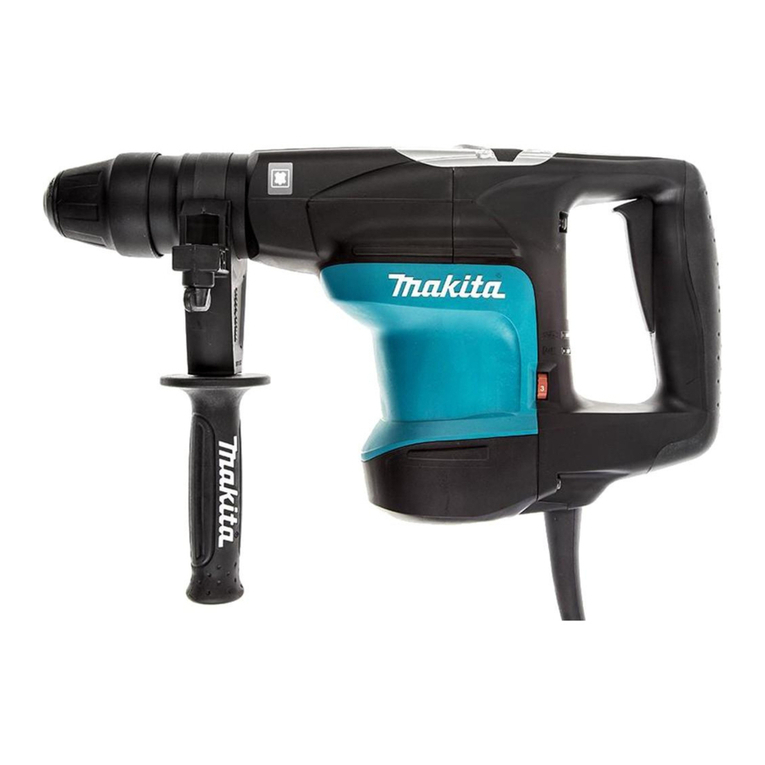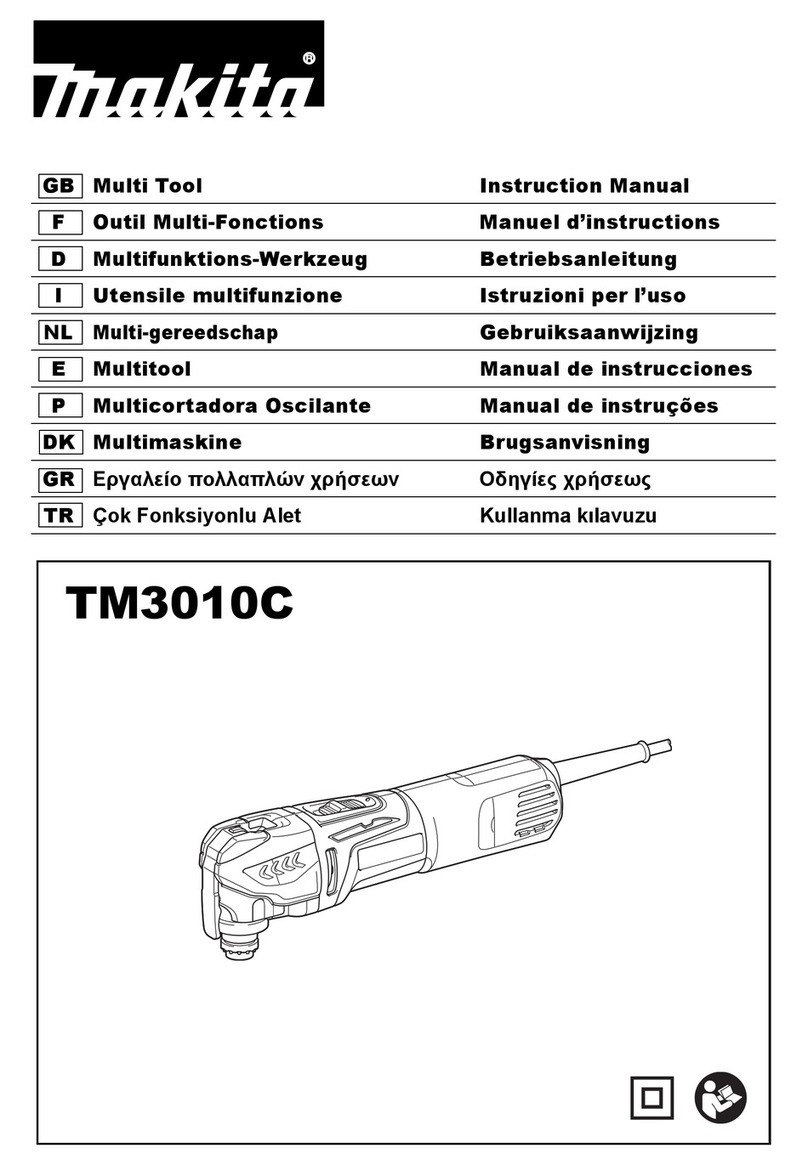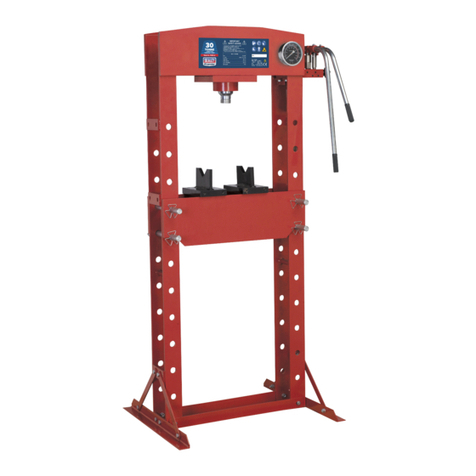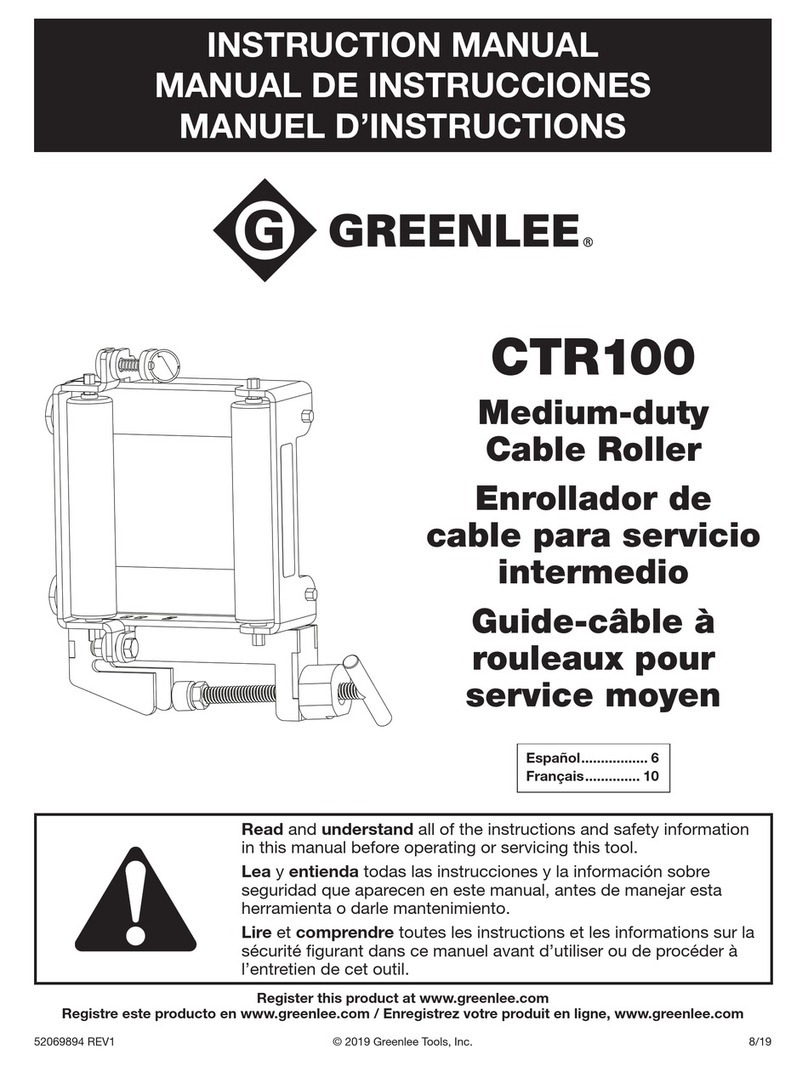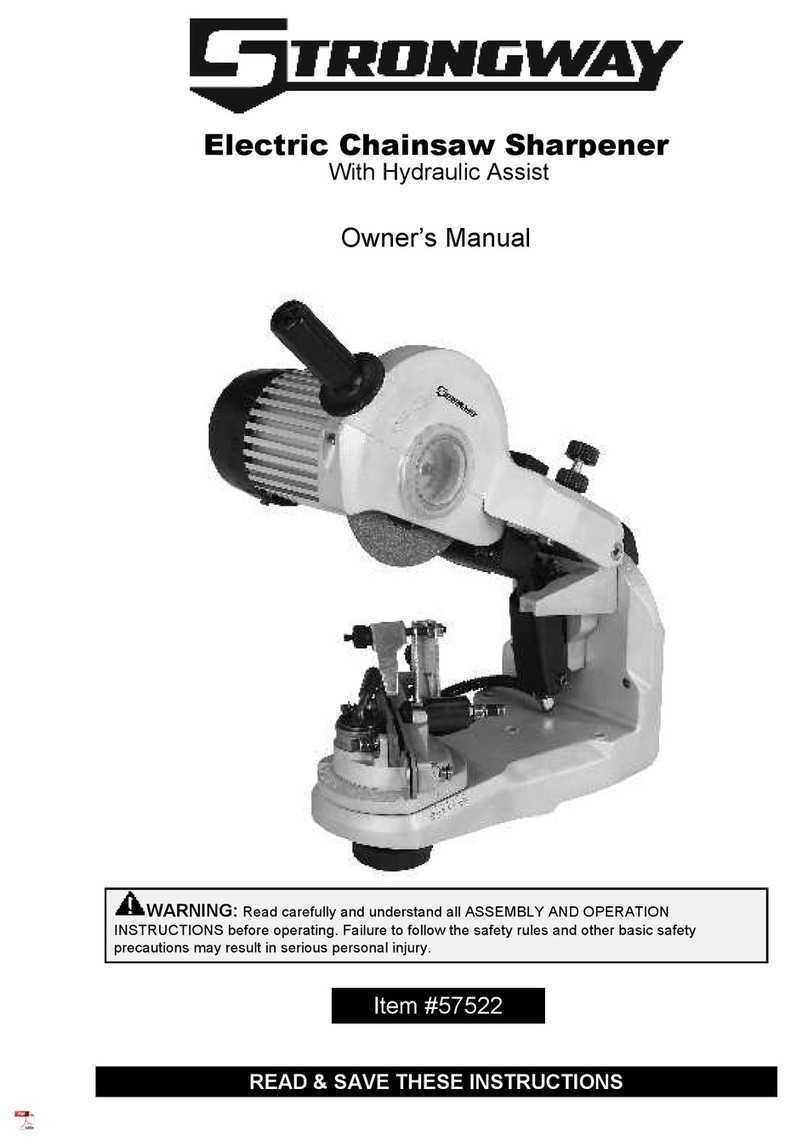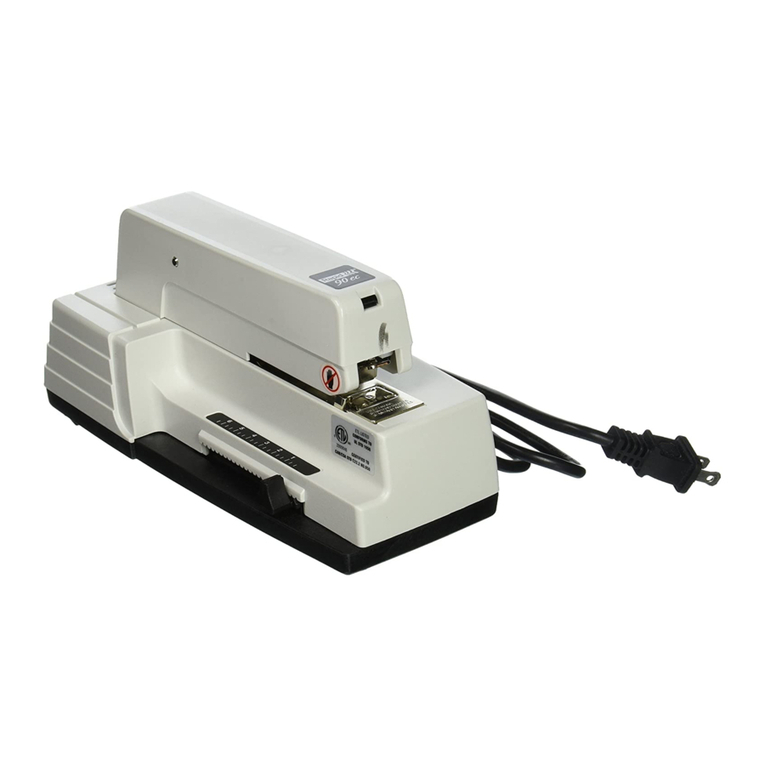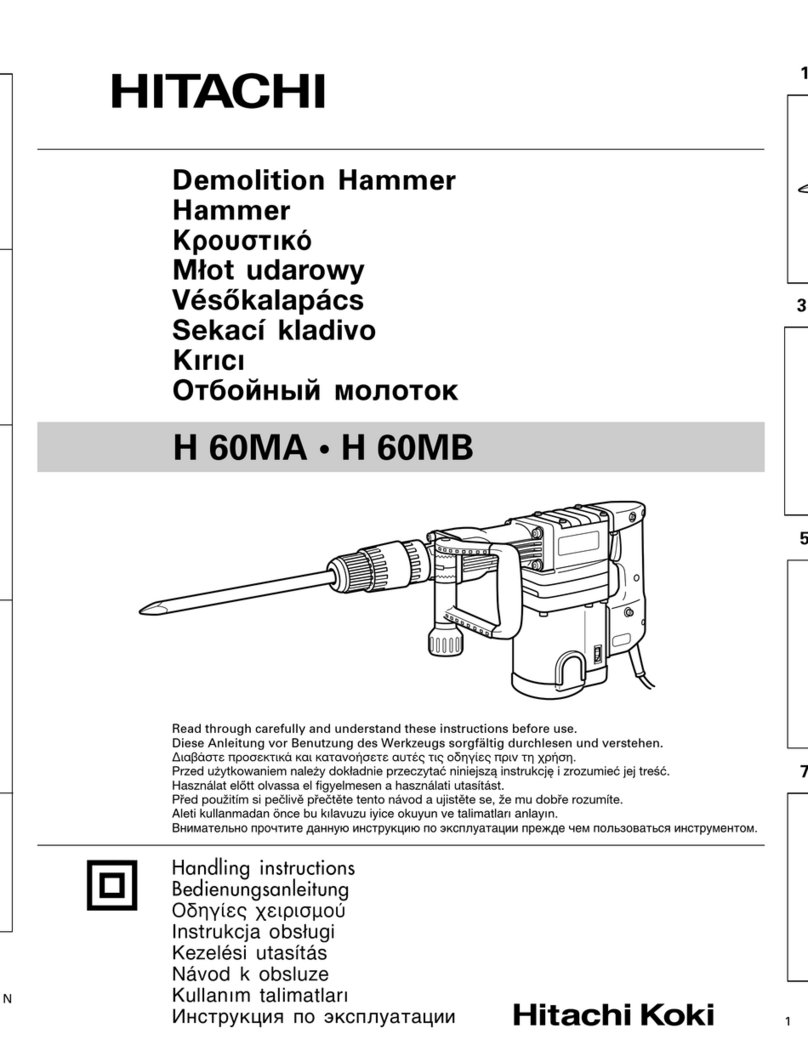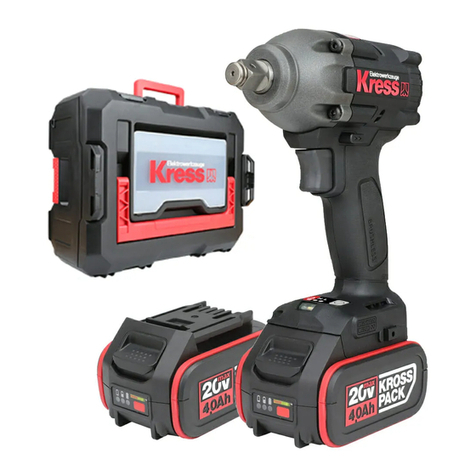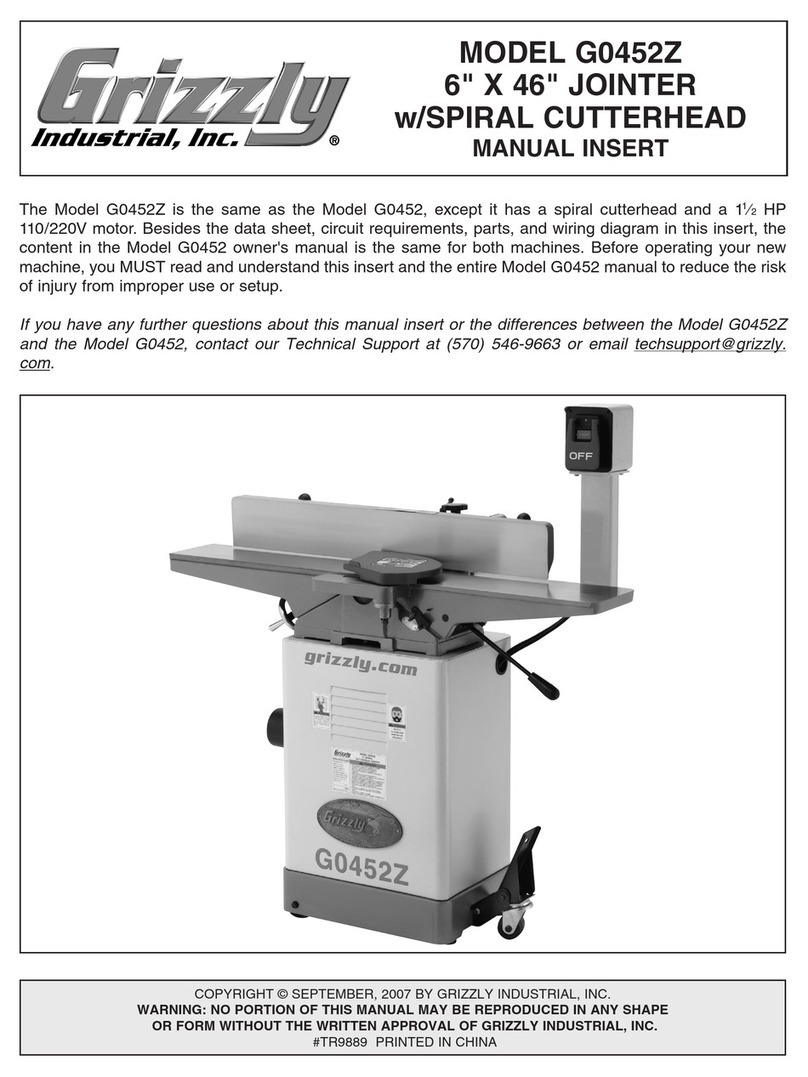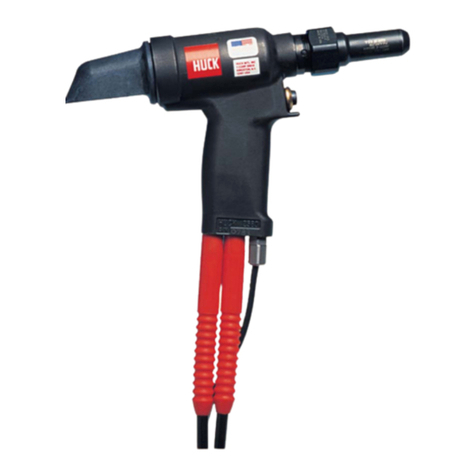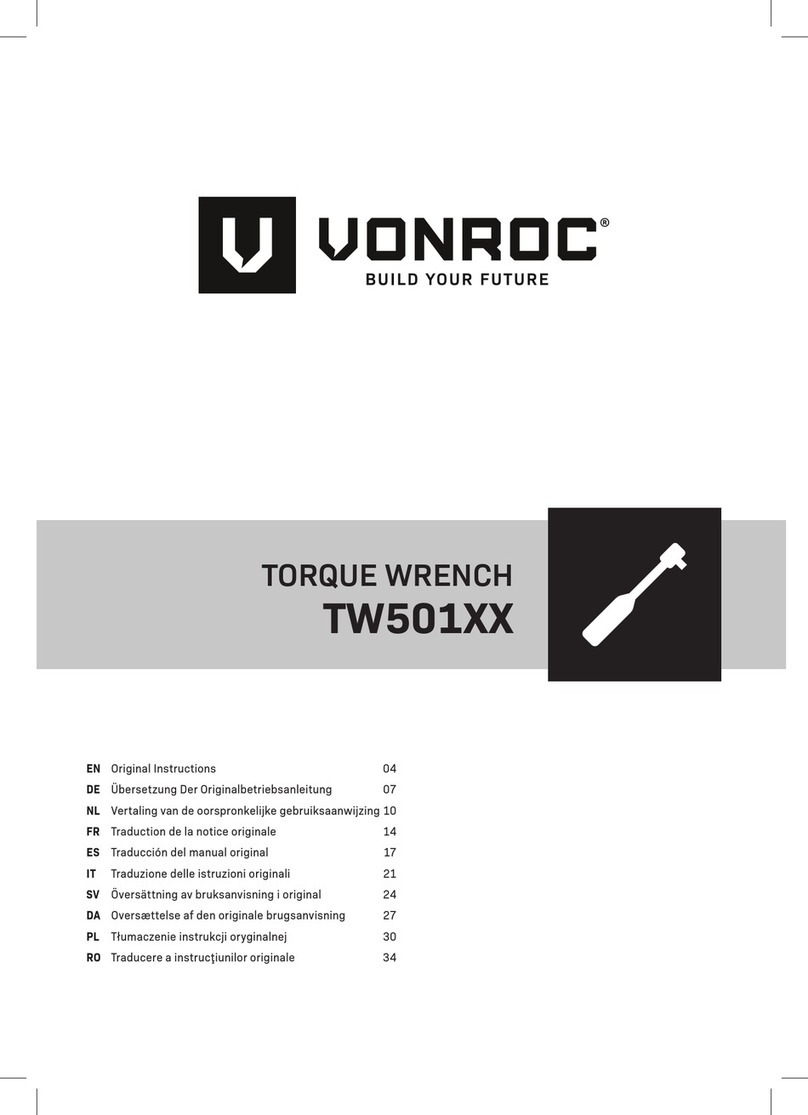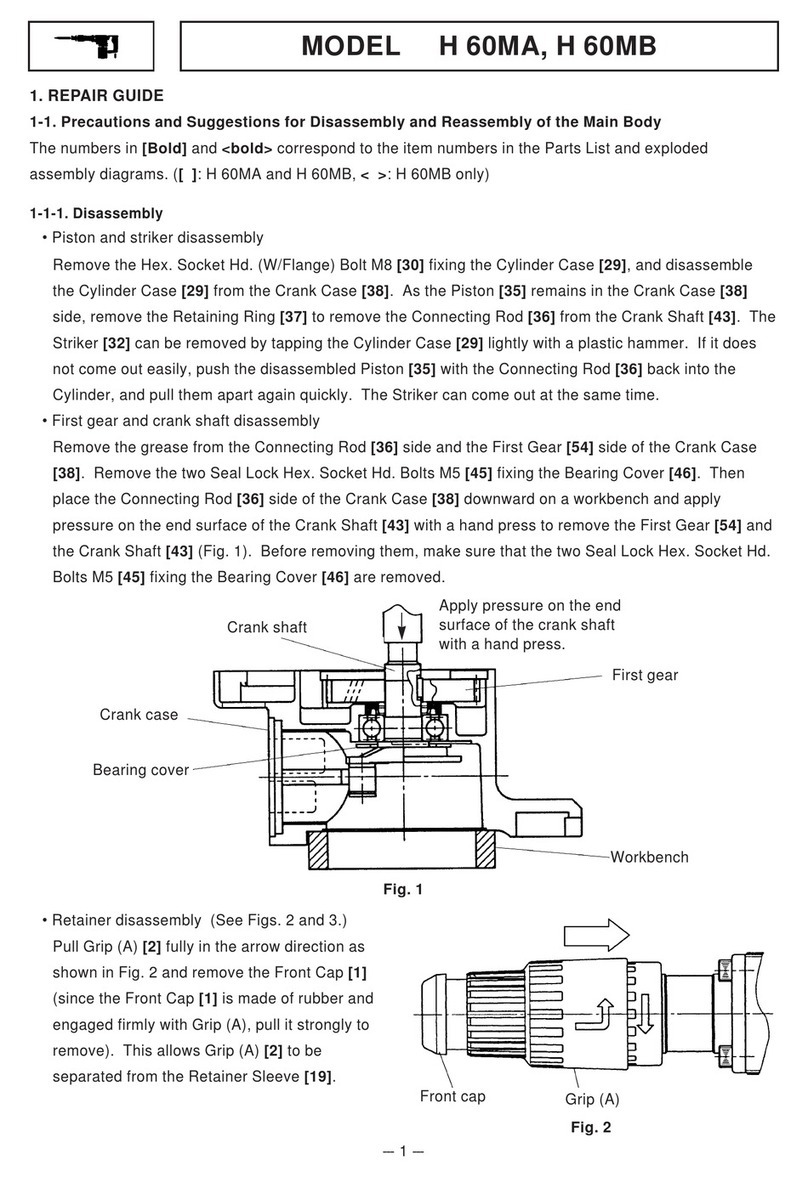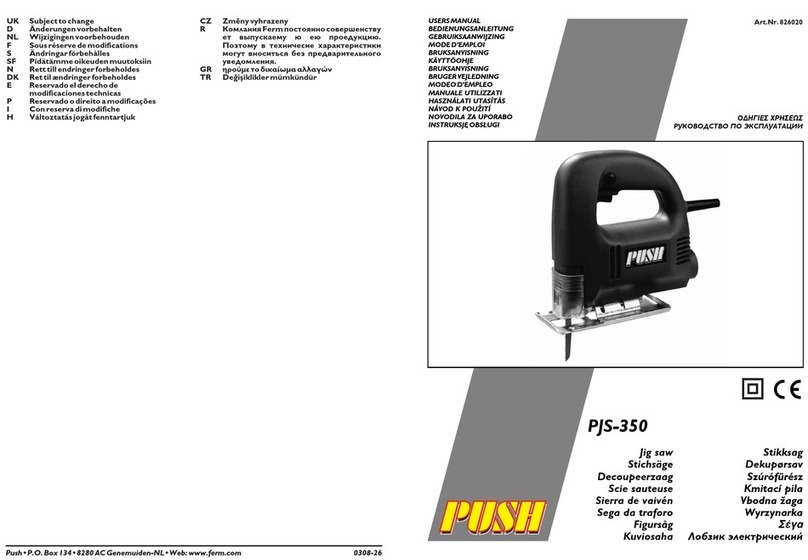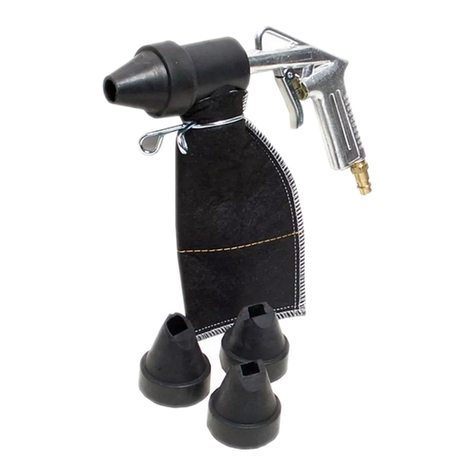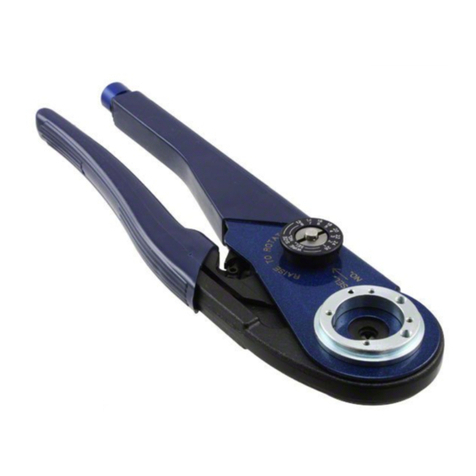Makita TW161DZ User manual

TW161D
EN Cordless Impact Wrench INSTRUCTION MANUAL 4
PL Akumulatorowy klucz
udarowy INSTRUKCJA OBSŁUGI 10
HU Akkumulátoros csavarkulcs HASZNÁLATI KÉZIKÖNYV 17
SK Akumulátorový razový
uťahovač NÁVOD NA OBSLUHU 24
CS Akumulátorový rázový
utahovák NÁVOD K OBSLUZE 30
UK Бездротовий ударний
гайковерт ІНСТРУКЦІЯ З
ЕКСПЛУАТАЦІЇ 36
RO Maşină de înşurubat cu
impact cu acumulator MANUAL DE INSTRUCŢIUNI 43
DE Akku - Schlagschrauber BETRIEBSANLEITUNG 50

1
2
3
Fig.1
1
2
Fig.2
1
Fig.3
1
Fig.4
1
Fig.5
1
AB
Fig.6
4
1
2
3
5
Fig.7
1
2
3
Fig.8
2

2
3
1
Fig.9
1
4
2
3
Fig.10
3
2
1
Fig.11
Fig.12
3

4ENGLISH
ENGLISH (Original instructions)
SPECIFICATIONS
Model: TW161D
Fastening capacities Standard bolt M8 - M16
High tensile bolt M6 - M12
Square drive 12.7 mm
No load speed Hard impact mode 0 - 2,400 min-1
Soft impact mode 0 - 1,300 min-1
Impacts per minute Hard impact mode 0 - 3,600 min-1
Soft impact mode 0 - 2,000 min-1
Overall length 150 mm
Rated voltage D.C. 10.8 V - 12 V max
Net weight 1.0 - 1.2 kg
• Duetoourcontinuingprogramofresearchanddevelopment,thespecicationshereinaresubjecttochange
without notice.
• Specicationsmaydifferfromcountrytocountry.
• Theweightmaydifferdependingontheattachment(s),includingthebatterycartridge.Thelightestandheavi-
est combination, according to EPTA-Procedure 01/2014, are shown in the table.
Applicable battery cartridge and charger
Batterycartridge BL1015 / BL1016 / BL1020B / BL1021B / BL1040B / BL1041B
Charger DC10SA / DC10SB / DC10WC / DC10WD / DC18RE
• Someofthebatterycartridgesandchargerslistedabovemaynotbeavailabledependingonyourregionof
residence.
WARNING: Only use the battery cartridges and chargers listed above.Useofanyotherbatterycartridges
andchargersmaycauseinjuryand/orre.
Intended use
The tool is intended for fastening bolts and nuts.
Noise
ThetypicalA-weightednoiseleveldeterminedaccord-
ing to EN62841-2-2:
Soundpressurelevel(LpA):93dB(A)
Soundpowerlevel(LWA):104dB(A)
Uncertainty(K):3dB(A)
NOTE:Thedeclarednoiseemissionvalue(s)has
been measured in accordance with a standard test
methodandmaybeusedforcomparingonetoolwith
another.
NOTE:Thedeclarednoiseemissionvalue(s)
mayalsobeusedinapreliminaryassessmentof
exposure.
WARNING: Wear ear protection.
WARNING:
The noise emission during actual
use of the power tool can differ from the declared
value(s) depending on the ways in which the tool is
used especially what kind of workpiece is processed.
WARNING:
Be sure to identify safety measures
to protect the operator that are based on an estima-
tion of exposure in the actual conditions of use (tak-
ing account of all parts of the operating cycle such
as the times when the tool is switched off and when
it is running idle in addition to the trigger time).
Vibration
Thevibrationtotalvalue(tri-axialvectorsum)deter-
mined according to EN62841-2-2:
Work mode: impact tightening of fasteners of the maxi-
mumcapacityofthetool
Vibrationemission(ah):8.0m/s2
Uncertainty(K):1.5m/s2
NOTE:Thedeclaredvibrationtotalvalue(s)hasbeen
measured in accordance with a standard test method
andmaybeusedforcomparingonetoolwithanother.
NOTE:Thedeclaredvibrationtotalvalue(s)mayalso
beusedinapreliminaryassessmentofexposure.

5ENGLISH
WARNING:
The vibration emission during actual
use of the power tool can differ from the declared val-
ue(s) depending on the ways in which the tool is used
especially what kind of workpiece is processed.
WARNING:
Be sure to identify safety measures
to protect the operator that are based on an estima-
tion of exposure in the actual conditions of use (tak-
ing account of all parts of the operating cycle such
as the times when the tool is switched off and when
it is running idle in addition to the trigger time).
EC Declaration of Conformity
For European countries only
TheECdeclarationofconformityisincludedasAnnexA
to this instruction manual.
SAFETY WARNINGS
General power tool safety warnings
WARNING:
Read all safety warnings, instruc-
tions, illustrations and specications provided with this
power tool. Failure to follow all instructions listed below
mayresultinelectricshock,reand/orseriousinjury.
Save all warnings and instruc-
tions for future reference.
Theterm"powertool"inthewarningsreferstoyourmains-oper-
ated(corded)powertoolorbattery-operated(cordless)powertool.
Cordless impact wrench safety warnings
1.
Hold the power tool by insulated gripping surfaces,
when performing an operation where the fastener
may contact hidden wiring. Fasteners contacting a
"live"wiremaymakeexposedmetalpartsofthepower
tool "live" and could give the operator an electric shock.
2. Wear ear protectors.
3. Check the impact socket carefully for wear,
cracks or damage before installation.
4. Hold the tool rmly.
5. Keep hands away from rotating parts.
6. Do not touch the impact socket, bolt, nut or the
workpiece immediately after operation.They
maybeextremelyhotandcouldburnyourskin.
7. Always be sure you have a rm footing.
Be sure no one is below when using the tool in
high locations.
8. The proper fastening torque may differ
depending upon the kind or size of the bolt.
Check the torque with a torque wrench.
SAVE THESE INSTRUCTIONS.
WARNING:
DO NOT let comfort or familiarity
with product (gained from repeated use) replace strict
adherence to safety rules for the subject product.
MISUSE or failure to follow the safety rules stated in this
instruction manual may cause serious personal injury.
Important safety instructions for
battery cartridge
1. Before using battery cartridge, read all instruc-
tions and cautionary markings on (1) battery
charger, (2) battery, and (3) product using
battery.
2. Do not disassemble battery cartridge.
3. If operating time has become excessively
shorter, stop operating immediately. It may
result in a risk of overheating, possible burns
and even an explosion.
4. If electrolyte gets into your eyes, rinse them
out with clear water and seek medical atten-
tion right away. It may result in loss of your
eyesight.
5. Do not short the battery cartridge:
(1) Do not touch the terminals with any con-
ductive material.
(2) Avoid storing battery cartridge in a con-
tainer with other metal objects such as
nails, coins, etc.
(3) Do not expose battery cartridge to water
or rain.
A battery short can cause a large current
ow, overheating, possible burns and even a
breakdown.
6. Do not store the tool and battery cartridge in
locations where the temperature may reach or
exceed 50 °C (122 °F).
7. Do not incinerate the battery cartridge even if
it is severely damaged or is completely worn
out. The battery cartridge can explode in a re.
8. Be careful not to drop or strike battery.
9. Do not use a damaged battery.
10. The contained lithium-ion batteries are subject
to the Dangerous Goods Legislation require-
ments.
Forcommercialtransportse.g.bythirdparties,
forwarding agents, special requirement on pack-
aging and labeling must be observed.
For preparation of the item being shipped, consult-
ing an expert for hazardous material is required.
Pleasealsoobservepossiblymoredetailed
national regulations.
Tape or mask off open contacts and pack up the
batteryinsuchamannerthatitcannotmove
around in the packaging.
11. Follow your local regulations relating to dis-
posal of battery.
12. Use the batteries only with the products
specied by Makita. Installing the batteries to
non-compliantproductsmayresultinare,exces-
siveheat,explosion,orleakofelectrolyte.
SAVE THESE INSTRUCTIONS.
CAUTION: Only use genuine Makita batteries.
Use of non-genuine Makita batteries, or batteries that
havebeenaltered,mayresultinthebatterybursting
causingres,personalinjuryanddamage.Itwill
alsovoidtheMakitawarrantyfortheMakitatooland
charger.

6ENGLISH
Tips for maintaining maximum
battery life
1.
Charge the battery cartridge before completely dis-
charged. Always stop tool operation and charge the
battery cartridge when you notice less tool power.
2.
Never recharge a fully charged battery cartridge.
Overcharging shortens the battery service life.
3.
Charge the battery cartridge with room tempera-
ture at 10 °C - 40 °C (50 °F - 104 °F). Let a hot
battery cartridge cool down before charging it.
FUNCTIONAL
DESCRIPTION
CAUTION: Always be sure that the tool is
switched off and the battery cartridge is removed
before adjusting or checking function on the tool.
Installing or removing battery
cartridge
CAUTION: Always switch off the tool before
installing or removing of the battery cartridge.
CAUTION: Hold the tool and the battery car-
tridge rmly when installing or removing battery
cartridge.Failuretoholdthetoolandthebattery
cartridgermlymaycausethemtoslipoffyourhands
andresultindamagetothetoolandbatterycartridge
andapersonalinjury.
►Fig.1: 1. Red indicator 2. Button 3.Batterycartridge
Toremovethebatterycartridge,slideitfromthetool
while sliding the button on the front of the cartridge.
Toinstallthebatterycartridge,alignthetongueonthe
batterycartridgewiththegrooveinthehousingandslip
itintoplace.Insertitallthewayuntilitlocksinplace
withalittleclick.Ifyoucanseetheredindicatoronthe
uppersideofthebutton,itisnotlockedcompletely.
CAUTION: Always install the battery cartridge
fully until the red indicator cannot be seen. If not,
itmayaccidentallyfalloutofthetool,causinginjuryto
youorsomeonearoundyou.
CAUTION: Do not install the battery cartridge
forcibly.Ifthecartridgedoesnotslideineasily,itis
notbeinginsertedcorrectly.
Battery protection system
Thetoolisequippedwithabatteryprotectionsystem.
Thissystemautomaticallycutsoffpowertothemotorto
extendbatterylife.
Thetoolwillautomaticallystopduringoperationifthe
tooland/orbatteryareplacedunderoneofthefollowing
conditions:
Overloaded:
The tool is operated in a manner that causes it to draw
anabnormallyhighcurrent.
In this situation, turn the tool off and stop the application
that caused the tool to become overloaded. Then turn
the tool on to restart.
Ifthetooldoesnotstart,thebatteryisoverheated.In
thissituation,letthebatterycoolbeforeturningthetool
on again.
Low battery voltage:
Theremainingbatterycapacityistoolowandthetool
willnotoperate.Ifyouturnthetoolon,themotorruns
again but stops soon. In this situation, remove and
rechargethebattery.
Indicating the remaining battery
capacity
Only for battery cartridges with the indicator
►Fig.2: 1. Indicator lamps 2. Check button
Pressthecheckbuttononthebatterycartridgetoindi-
catetheremainingbatterycapacity.Theindicatorlamps
light up for a few seconds.
Indicator lamps Remaining
capacity
Lighted Off
75% to 100%
50% to 75%
25% to 50%
0% to 25%
NOTE: Depending on the conditions of use and the
ambienttemperature,theindicationmaydifferslightly
fromtheactualcapacity.
Switch action
►Fig.3: 1. Switch trigger
CAUTION: Before installing the battery car-
tridge into the tool, always check to see that the
switch trigger actuates properly and returns to
the "OFF" position when released.
Tostartthetool,simplypulltheswitchtrigger.Tool
speedisincreasedbyincreasingpressureontheswitch
trigger. Release the switch trigger to stop.
NOTE:Thetoolautomaticallystopsifyoukeeppull-
ing the switch trigger for about 6 minutes.

7ENGLISH
Lighting up the front lamp
CAUTION: Do not look in the light or see the
source of light directly.
►Fig.4: 1. Lamp
►Fig.5: 1. Button
Pull the switch trigger to turn on the lamp. To turn off,
releaseit.Thelampgoesoutapproximately10seconds
after releasing the switch trigger.
To keep the lamp off, turn off the lamp status. First pull
and release the switch trigger. And then press the but-
ton for one second within 10 seconds.
To turn on the lamp status again, press the button again
similarly.
NOTE:Toconrmthelampstatus,pullthetrigger.
Whenthelamplightsupbypullingtheswitchtrigger,
the lamp status is ON. When the lamp does not come
on, the lamp status is OFF.
NOTE:Whenthetoolisoverheated,thelightashes
foroneminute,andthentheLEDdisplaygoesoff.In
this case, cool down the tool before operating again.
NOTE:Useadryclothtowipethedirtoffthelensof
the lamp. Be careful not to scratch the lens of lamp, or
itmaylowertheillumination.
Reversing switch action
►Fig.6: 1. Reversing switch lever
CAUTION: Always check the direction of
rotation before operation.
CAUTION: Use the reversing switch only after
the tool comes to a complete stop. Changing the
directionofrotationbeforethetoolstopsmaydam-
age the tool.
CAUTION: When not operating the tool,
always set the reversing switch lever to the neu-
tral position.
This tool has a reversing switch to change the direction
of rotation. Depress the reversing switch lever from the
A side for clockwise rotation or from the B side for coun-
terclockwise rotation.
When the reversing switch lever is in the neutral posi-
tion, the switch trigger cannot be pulled.
Changing the impact force
►Fig.7: 1. Hard 2. Soft 3. Reverse rotation auto stop
mode 4. Changed in three steps 5. Button
You can change the impact force in three steps: hard,
soft, and Reverse rotation auto stop mode.
This allows a tightening suitable to the work.
Everytimethebuttonispressed,thenumberofblows
changes in three steps.
ThefunctionofReverserotationautostopmodeworksonlywithpullingthetriggerfullyincounterclockwisetool
rotation. When the bolt/nut gets enough loosened, the tool stops the impact and rotation.
Forapproximatelyoneminuteafterreleasingtheswitchtrigger,theimpactforcecanbechanged.
Impact force grade displayed
on panel Maximum blows Purpose Example of application
Hard 3,600 min-1(/min) Tightening when force and
speed are desired.
Assembling steel frames.
Soft 2,000 min-1(/min) Tighteningwhenyouneedne
adjustmentwithsmalldiameter
bolt.
Assembling furniture.
Reverse rotation auto stop
mode
3,600 min-1(/min) Loosening with auto stop
function.
Disassembling bolts/nuts.
NOTE:Reverserotationautostopmodeisavailableonlywhenthetoolrotatescounterclockwise.Whenrotating
clockwise in Reverse rotation auto stop mode, the impact force and speed are the same as Hard impact mode.
NOTE:Whenalllampsontheswitchpanelgoout,thetoolisturnedofftosavethebatterypower.Theimpactforce
gradecanbecheckedbypullingtheswitchtriggertotheextentthatthetooldoesnotoperate.
NOTE: While pulling the switch trigger, the impact force grade cannot be changed.

8ENGLISH
ASSEMBLY
CAUTION: Always be sure that the tool is
switched off and the battery cartridge is removed
before carrying out any work on the tool.
Selecting correct impact socket
Alwaysusethecorrectsizeimpactsocketforboltsand
nuts. An incorrect size impact socket will result in inac-
curate and inconsistent fastening torque and/or damage
to the bolt or nut.
Installing or removing impact socket
Optional accessory
CAUTION: Make sure that the impact socket
and the mounting portion are not damaged before
installing the impact socket.
CAUTION: After inserting the impact socket,
make sure that it is rmly secured. If it comes out,
do not use it.
NOTE:Thewayofimpactsocketinstallationvaries
dependingonthetypeofthesquaredriveonthetool.
Tool with the ring spring
For impact socket without O-ring and pin
►Fig.8: 1. Impact socket 2. Square drive 3. Ring
spring
Push the impact socket onto the square drive until it
locks into place.
Toremovetheimpactsocket,simplypullitoff.
For impact socket with O-ring and pin
►Fig.9: 1. Impact socket 2. O-ring 3. Pin
Move the O-ring out of the groove in the impact socket
and remove the pin from the impact socket. Fit the
impact socket onto the square drive so that the hole in
the impact socket is aligned with the hole in the square
drive.
Insert the pin through the hole in the impact socket and
square drive. Then return the O-ring to the original posi-
tion in the impact socket groove to retain the pin.
To remove the impact socket, follow the installation
procedures in reverse.
Tool with the detent pin
►Fig.10: 1. Impact socket 2. Hole 3. Square drive
4. Detent pin
Align the hole in the side of the impact socket with the
detent pin on the square drive and push the impact
socket onto the square drive until it locks into place. Tap
itlightlyifrequired.
Toremovetheimpactsocket,simplypullitoff.Ifitis
hard to remove, depress the detent pin while pulling the
impact socket.
Installing hook
CAUTION: When installing the hook, always
secure it with the screw rmly. If not, the hook
maycomeofffromthetoolandresultinthepersonal
injury.
►Fig.11: 1. Groove 2. Hook 3. Screw
Thehookisconvenientfortemporarilyhangingthetool.
This can be installed on either side of the tool. To install
the hook, insert it into a groove in the tool housing on
either side and then secure it with a screw. To remove,
loosen the screw and then take it out.
OPERATION
CAUTION: Always insert the battery cartridge
all the way until it locks in place.Ifyoucanseethe
red indicator on the upper side of the button, it is not
lockedcompletely.Insertitfullyuntiltheredindicator
cannotbeseen.Ifnot,itmayaccidentallyfalloutof
thetool,causinginjurytoyouorsomeonearound
you.
►Fig.12
Holdthetoolrmlyandplacetheimpactsocketover
the bolt or nut. Turn the tool on and fasten for the proper
fastening time.
Theproperfasteningtorquemaydifferdependingupon
the kind or size of the bolt, the material of the workpiece
to be fastened, etc. The relation between fastening
torqueandfasteningtimeisshowninthegures.
Proper fastening torque for standard bolt
N•m
(kgf•cm)
2
1
2
13
0
100
(1020)
120
(1224)
80
(816)
60
(612)
40
(408)
20
(204)
M12
M14
M10
M12
M14
M10
M8
M8
140
(1430)
M16
M16
1.Fasteningtime(second)2. Fastening torque

9ENGLISH
Proper fastening torque for high tensile bolt
2
1
140
(1430)
N•m
(kgf•cm)
210
80
(816)
60
(612)
40
(408)
20
(204)
3
100
(1020)
120
(1224)
M10
M12
M12
M8
M8
M10
1.Fasteningtime(second)2. Fastening torque
NOTE: Hold the tool pointed straight at the bolt or nut.
NOTE:Excessivefasteningtorquemaydamagethe
bolt/nutorimpactsocket.Beforestartingyourjob,
alwaysperformatestoperationtodeterminethe
properfasteningtimeforyourboltornut.
NOTE:
Ifthetoolisoperatedcontinuouslyuntilthebat-
terycartridgehasdischarged,allowthetooltorestfor15
minutesbeforeproceedingwithafreshbatterycartridge.
Thefasteningtorqueisaffectedbyawidevarietyof
factorsincludingthefollowing.Afterfastening,always
check the torque with a torque wrench.
1. Whenthebatterycartridgeisdischargedalmost
completely,voltagewilldropandthefastening
torque will be reduced.
2. Impact socket
• Failure to use the correct size impact socket
will cause a reduction in the fastening torque.
•
Awornimpactsocket(wearonthehexendorsquare
end)willcauseareductioninthefasteningtorque.
3. Bolt
•
Eventhoughthetorquecoefcientandtheclass
of bolt are the same, the proper fastening torque
will differ according to the diameter of bolt.
• Even though the diameters of bolts are the
same, the proper fastening torque will differ
accordingtothetorquecoefcient,theclass
of bolt and the bolt length.
4.
Theuseoftheuniversaljointortheextensionbarsome-
what reduces the fastening force of the impact wrench.
Compensatebyfasteningforalongerperiodoftime.
5.
The manner of holding the tool or the material of
driving position to be fastened will affect the torque.
6. Operating the tool at low speed will cause a reduc-
tion in the fastening torque.
MAINTENANCE
CAUTION: Always be sure that the tool is
switched off and the battery cartridge is removed
before attempting to perform inspection or
maintenance.
NOTICE: Never use gasoline, benzine, thinner,
alcohol or the like. Discoloration, deformation or
cracks may result.
To maintain product SAFETY and RELIABILITY,
repairs,anyothermaintenanceoradjustmentshould
beperformedbyMakitaAuthorizedorFactoryService
Centers,alwaysusingMakitareplacementparts.
OPTIONAL
ACCESSORIES
CAUTION: These accessories or attachments
are recommended for use with your Makita tool
specied in this manual.Theuseofanyother
accessories or attachments might present a risk of
injurytopersons.Onlyuseaccessoryorattachment
for its stated purpose.
Ifyouneedanyassistanceformoredetailsregard-
ingtheseaccessories,askyourlocalMakitaService
Center.
• Impact socket
• Hook
• Extension bar
• Universaljoint
• Socket bit adapter
• Plasticcarryingcase
• Makitagenuinebatteryandcharger
NOTE:Someitemsinthelistmaybeincludedinthe
toolpackageasstandardaccessories.Theymay
differfromcountrytocountry.

10 POLSKI
POLSKI (Instrukcja oryginalna)
DANE TECHNICZNE
Model: TW161D
Zakresydokręcania Śrubazwykła M8 – M16
Śrubaodużejwytrzymałości M6 – M12
Zabierakkwadratowy 12,7 mm
Prędkośćbezobciążenia Trybdużejsiłyudaru 0 – 2 400 min-1
Trybmałejsiłyudaru 0 – 1 300 min-1
Liczbaudarównaminutę Trybdużejsiłyudaru 0 – 3 600 min-1
Trybmałejsiłyudaru 0 – 2 000 min-1
Długośćcałkowita 150 mm
Napięcieznamionowe Napięciestałe10,8–12Vmaks.
Masa netto 1,0 – 1,2 kg
• Wzwiązkuzestaleprowadzonymprzeznasząrmęprogramembadawczo-rozwojowymniniejszedanemogą
uleczmianombezwcześniejszegopowiadomienia.
• Danetechnicznemogąróżnićsięwzależnościodkraju.
• Masamożebyćróżnawzależnościodosprzętu,wtymakumulatora.Wtabeliprzedstawionajestnajlżejszai
najcięższakonguracja,zgodniezprocedurąEPTA01/2014.
Kompatybilne akumulatory i ładowarki
Akumulator BL1015 / BL1016 / BL1020B / BL1021B / BL1040B / BL1041B
Ładowarka DC10SA / DC10SB / DC10WC / DC10WD / DC18RE
•
Pewnezwymienionychpowyżejakumulatorówiładowarekmogąbyćniedostępnewregioniezamieszkaniaużytkownika.
OSTRZEŻENIE: Należy używać wyłącznie akumulatorów i ładowarek wymienionych powyżej.
Używanieinnychakumulatorówiładowarekmożestwarzaćryzykowystąpieniaobrażeńciałalubpożaru.
Przeznaczenie
Narzędziejestprzeznaczonedodokręcaniaśrubi
nakrętek.
Hałas
TypowyrównoważnypoziomdźwiękuAokreślonyw
oparciuonormęEN62841-2-2:
Poziomciśnieniaakustycznego(LpA):93dB(A)
Poziommocyakustycznej(LWA):104dB(A)
Niepewność(K):3dB(A)
WSKAZÓWKA:Deklarowanawartośćemisjihałasu
zostałazmierzonazgodniezestandardowąmetodą
testowąimożnająwykorzystaćdoporównywania
narzędzi.
WSKAZÓWKA:Deklarowanąwartośćemisjihałasu
możnatakżewykorzystaćwewstępnejocenie
narażenia.
OSTRZEŻENIE: Nosić ochronniki słuchu.
OSTRZEŻENIE:
Poziom hałasu wytwarzanego
podczas rzeczywistego użytkowania elektronarzę-
dzia może się różnić od wartości deklarowanej w
zależności od sposobu użytkowania narzędzia, a w
szczególności od rodzaju obrabianego elementu.
OSTRZEŻENIE:
W oparciu o szacowane narażenie
w rzeczywistych warunkach użytkowania należy określić
środki bezpieczeństwa w celu zapewnienia ochrony ope-
ratora (uwzględniając wszystkie elementy cyklu działania,
tj. czas, kiedy narzędzie jest wyłączone i kiedy pracuje na
biegu jałowym, a także czas, kiedy jest włączone).
Drgania
Całkowitawartośćpoziomudrgań(sumawektoróww3
osiach)określonazgodnieznormąEN62841-2-2:
Trybpracy:dokręcanieudaroweśrubiwkrętówwmak-
symalnymzakresiemożliwościnarzędzia
Emisjadrgań(ah):8,0m/s2
Niepewność(K):1,5m/s2
WSKAZÓWKA:
Deklarowanawartośćpoziomudrgań
zostałazmierzonazgodniezestandardowąmetodątestową
imożnająwykorzystaćdoporównywanianarzędzi.
WSKAZÓWKA:
Deklarowanąwartośćpoziomudrgań
możnatakżewykorzystaćwewstępnejocenienarażenia.

11 POLSKI
OSTRZEŻENIE: Drgania wytwarzane pod-
czas rzeczywistego użytkowania elektronarzędzia
mogą się różnić od wartości deklarowanej w
zależności od sposobu użytkowania narzędzia,
a w szczególności od rodzaju obrabianego
elementu.
OSTRZEŻENIE: W oparciu o szacowane
narażenie w rzeczywistych warunkach użytkowa-
nia należy określić środki bezpieczeństwa w celu
zapewnienia ochrony operatora (uwzględniając
wszystkie elementy cyklu działania, tj. czas, kiedy
narzędzie jest wyłączone i kiedy pracuje na biegu
jałowym, a także czas, kiedy jest włączone).
Deklaracja zgodności WE
Dotyczy tylko krajów europejskich
DeklaracjazgodnościWEjestdołączonajakozałącznik
Adoniniejszejinstrukcjiobsługi.
OSTRZEŻENIA
DOTYCZĄCE
BEZPIECZEŃSTWA
Ogólne zasady bezpiecznej
eksploatacji elektronarzędzi
OSTRZEŻENIE: Należy zapoznać się z
ostrzeżeniami dotyczącymi bezpieczeństwa,
instrukcjami, ilustracjami i danymi technicz-
nymi dołączonymi do tego elektronarzędzia.
Niezastosowaniesiędopodanychponiżejinstrukcji
możeprowadzićdoporażeniaprądem,pożarui/lub
poważnychobrażeńciała.
Wszystkie ostrzeżenia i instruk-
cje należy zachować do wykorzy-
stania w przyszłości.
Pojęcie„elektronarzędzie",występującewwymienionychtu
ostrzeżeniach,odnosisiędoelektronarzędziazasilanegoz
siecielektrycznej(zprzewodemzasilającym)lubdoelektro-
narzędziaakumulatorowego(bezprzewoduzasilającego).
Ostrzeżenia dotyczące
bezpieczeństwa dla
akumulatorowego klucza udarowego
1. Trzymać elektronarzędzie za izolowane
powierzchnie rękojeści podczas wykonywania
prac, przy których wkręcany wkręt lub śruba
mogą dotknąć niewidocznej instalacji elek-
trycznej.Zetknięciewkrętulubśrubyzprzewo-
demelektrycznymznajdującymsiępodnapięciem
spowoduje,żeodsłonięteelementymetalowe
narzędziarównieżznajdąsiępodnapięciem,gro-
żącporażeniemoperatoraprądemelektrycznym.
2. Nosić ochronniki słuchu.
3. Przed przystąpieniem do pracy sprawdzić
dokładnie gniazdo udarowe pod kątem zuży-
cia, pęknięć lub uszkodzeń.
4. Narzędzie należy trzymać mocno i pewnie.
5. Trzymać ręce z dala od części obrotowych.
6. Nie dotykać nasadki udarowej, śruby, nakrętki
ani elementu obrabianego od razu po zakoń-
czeniu danej operacji.Elementytemogąbyć
bardzogorąceispowodowaćoparzenieskóry.
7. Podczas pracy należy zadbać o dobre oparcie
dla nóg.
W przypadku pracy na pewnej wysokości
upewnić się, że na dole nie przebywają żadne
osoby.
8. Odpowiedni moment dokręcania zależy od
rodzaju i wielkości śruby. Moment dokrę-
cenia należy sprawdzać za pomocą klucza
dynamometrycznego.
ZACHOWAĆ NINIEJSZE
INSTRUKCJE.
OSTRZEŻENIE: NIE WOLNO pozwolić, aby
wygoda lub rutyna (nabyta w wyniku wielokrot-
nego używania urządzenia) zastąpiły ścisłe prze-
strzeganie zasad bezpieczeństwa obsługi.
NIEWŁAŚCIWE UŻYTKOWANIE narzędzia lub
niestosowanie się do zasad bezpieczeństwa
podanych w niniejszej instrukcji obsługi może
prowadzić do poważnych obrażeń ciała.
Ważne zasady bezpieczeństwa
dotyczące akumulatora
1. Przed użyciem akumulatora zapoznać się ze
wszystkimi instrukcjami i znakami ostrze-
gawczymi na (1) ładowarce, (2) akumulatorze
i (3) produkcie, w którym będzie używany
akumulator.
2. Akumulatora nie wolno rozbierać.
3. Jeśli czas działania uległ znacznemu skróce-
niu, należy natychmiast przerwać pracę. Może
bowiem dojść do przegrzania, ewentualnych
poparzeń, a nawet eksplozji.
4. W przypadku przedostania się elektrolitu do
oczu, przemyć je czystą wodą i niezwłocznie
uzyskać pomoc lekarską. Może on bowiem
spowodować utratę wzroku.
5. Nie doprowadzać do zwarcia akumulatora:
(1) Nie dotykać styków materiałami przewo-
dzącymi prąd.
(2) Unikać przechowywania akumulatora w
pojemniku z metalowymi przedmiotami,
takimi jak gwoździe, monety itp.
(3) Chronić akumulator przed deszczem lub
wodą.
Zwarcie prowadzi do przepływu prądu elek-
trycznego o dużym natężeniu i przegrzania
akumulatora, co w konsekwencji może grozić
poparzeniami a nawet awarią urządzenia.
6. Narzędzia i akumulatora nie wolno przecho-
wywać w miejscach, w których temperatura
osiąga bądź przekracza 50°C (122°F).

12 POLSKI
7. Akumulatorów nie wolno spalać, również tych
poważnie uszkodzonych lub całkowicie zuży-
tych. Akumulator może eksplodować w ogniu.
8. Chronić akumulator przed upadkiem i
uderzeniami.
9. Nie wolno używać uszkodzonego akumulatora.
10. Stanowiące wyposażenie akumulatory lito-
wo-jonowe podlegają przepisom dotyczącym
produktów niebezpiecznych.
Napotrzebytransportukomercyjnego,np.świad-
czonegoprzezrmytrzecieczyspedycyjne,
należyprzestrzegaćspecjalnychwymagańw
zakresiepakowaniaioznaczaniaetykietami.
Przygotowanieproduktudowysyłkiwymaga
skonsultowaniasięzespecjalistąds.materiałów
niebezpiecznych.Należytakżeprzestrzegać
przepisówkrajowych,któremogąbyćbardziej
szczegółowe.
Zakleićtaśmąlubzaślepićotwartestykiakumula-
toraorazzabezpieczyćgo,abyniemógłsięprze-
suwaćwopakowaniu.
11. Postępować zgodnie z przepisami lokalnymi
dotyczącymi usuwania akumulatorów.
12. Używać akumulatorów tylko z produktami
określonymi przez rmę Makita. Zastosowanie
akumulatorówwniezgodnychproduktachmoże
spowodowaćpożar,przegrzanie,wybuchlub
wyciekelektrolitu.
ZACHOWAĆ NINIEJSZE
INSTRUKCJE.
PRZESTROGA: Używać wyłącznie oryginal-
nych akumulatorów rmy Makita.Używanienie-
oryginalnychakumulatorówrminnychniżMakitalub
akumulatorów,którezostałyzmodykowane,może
spowodowaćwybuchakumulatoraipożar,obrażenia
ciałaorazzniszczeniemienia.Stanowitorównież
naruszeniewarunkówgwarancjirmyMakitadoty-
czącychnarzędziaiładowarki.
Wskazówki dotyczące zacho-
wania maksymalnej trwałości
akumulatora
1. Akumulator należy naładować zanim zostanie
do końca rozładowany. Po zauważeniu spadek
mocy narzędzia należy przerwać pracę i nała-
dować akumulator.
2. Nie wolno ładować powtórnie w pełni nałado-
wanego akumulatora. Przeładowanie akumula-
tora skraca jego trwałość.
3. Akumulator należy ładować w temperaturze
pokojowej w przedziale 10–40°C (50–104°F). W
przypadku gorącego akumulatora przed przy-
stąpieniem do ładowania należy poczekać, aż
ostygnie.
OPIS DZIAŁANIA
PRZESTROGA: Przed przystąpieniem do regu-
lacji lub przeglądu narzędzia upewnić się, że jest
ono wyłączone, a akumulator został wyjęty.
Wkładanie i wyjmowanie
akumulatora
PRZESTROGA: Przed włożeniem lub wyjęciem
akumulatora należy zawsze wyłączyć narzędzie.
PRZESTROGA: Podczas wkładania lub wyjmo-
wania akumulatora należy mocno trzymać narzę-
dzie i akumulator.Wprzeciwnymraziemogąsięone
wyślizgnąćzrąk,powodującuszkodzenienarzędzia
lubakumulatoraiobrażeniaciała.
►Rys.1: 1.Czerwonywskaźnik2.Przycisk
3. Akumulator
Abywyjąćakumulator,przesuńprzyciskznajdującysię
wprzedniejjegoczęściiwysuńakumulator.
Abywłożyćakumulator,wyrównajwystępnaakumulato-
rzezrowkiemwobudowieiwsuńgonaswojemiejsce.
Akumulatornależywsunąćdooporu,ażsięzatrzaśniena
miejscu,cojestsygnalizowanedelikatnymkliknięciem.
Jeśliwgórnejczęściprzyciskujestwidocznyczerwony
wskaźnik,akumulatorniezostałcałkowiciezatrzaśnięty.
PRZESTROGA: Akumulator należy włożyć
do końca, tak aby czerwony wskaźnik nie był
widoczny.Wprzeciwnymraziemożeprzypadkowo
wypaśćznarzędzia,powodującobrażeniaoperatora
lubosóbpostronnych.
PRZESTROGA: Nie wkładać akumulatora na
siłę.Jeśliakumulatorniedajesięswobodniewsunąć,
oznaczato,żezostałwłożonynieprawidłowo.
Układ zabezpieczenia akumulatora
Narzędziejestwyposażonewukładzabezpieczenia
akumulatora.Układautomatycznieodcinazasilanie
silnikawceluwydłużeniatrwałościakumulatora.
Narzędziezostanieautomatyczniezatrzymanepod-
czaspracywnastępującychsytuacjachzwiązanychz
narzędziem/akumulatorem:
Przeciążenie:
Narzędziepracujewsposób,którypowodujepobór
nadmierniewysokiegoprądu.
Wtakiejsytuacjinależywyłączyćnarzędzieizaprze-
staćwykonywaniaczynnościpowodującejprzeciążenie
narzędzia.Następnienależywłączyćnarzędziewcelu
jegoponownegouruchomienia.
Jeślinarzędzienieuruchomisię,oznaczato,żeaku-
mulatorjestprzegrzany.Wtakiejsytuacji,przedponow-
nymuruchomieniemnarzędzianależyodczekać,aż
akumulatorostygnie.
Niskie napięcie akumulatora:
Stannaładowaniaakumulatorajestzbytniski,aby
narzędziemogłopracować.Wprzypadkuwłączenia
narzędziasilnikuruchomisięponownieipochwilisię
zatrzyma.Wtakiejsytuacjinależywyjąćakumulatori
gonaładować.

13 POLSKI
Wskazanie stanu naładowania
akumulatora
Tylko w przypadku akumulatorów ze wskaźnikiem
►Rys.2: 1.Lampkiwskaźnika2.Przyciskkontrolny
Nacisnąćprzyciskkontrolnynaakumulatorzewcelu
wyświetleniastanunaładowaniaakumulatora.Lampki
wskaźnikazaświecąsięprzezkilkasekund.
Lampki wskaźnika Poziom naładowa-
nia akumulatora
Świeci się Wył.
75–100%
50–75%
25–50%
0–25%
WSKAZÓWKA:Zależnieodwarunkówużytkowania
itemperaturyotoczenia,wskazywanypoziommoże
nieznaczniesięróżnićodrzeczywistegostanunała-
dowania akumulatora.
Działanie przełącznika
►Rys.3: 1.Spustprzełącznika
PRZESTROGA: Przed włożeniem akumulatora
do narzędzia należy zawsze sprawdzić, czy spust
przełącznika działa prawidłowo i czy powraca do
położenia wyłączenia po jego zwolnieniu.
Wceluuruchomienianarzędziawystarczypociągnąćspust
przełącznika.Prędkośćnarzędziazwiększasięwrazze
zwiększaniemnaciskunaspustprzełącznika.Wceluzatrzy-
maniaurządzenianależyzwolnićspustprzełącznika.
WSKAZÓWKA:Narzędziezatrzymasięautoma-
tycznie,gdyspustprzełącznikapozostaniewciśnięty
przezokoło6min.
Włączanie lampki czołowej
PRZESTROGA: Nie patrzeć na światło ani
bezpośrednio na źródło światła.
►Rys.4: 1. Lampka
►Rys.5: 1.Przycisk
Wceluwłączenialampkioświetlenianależypociągnąć
zaspustprzełącznika.Abywyłączyćlampkęoświetle-
nia,należyzwolnićspustprzełącznika.Lampkaoświe-
tleniawyłączasiępookoło10sodzwolnieniaspustu
przełącznika.
Jeślilampkaoświetleniamasięniewłączać,wyłączyć
trybdziałanialampki.Należynajpierwpociągnąćizwol-
nićspustprzełącznika.Następnienacisnąćprzycisk i
przytrzymaćgoprzezjednąsekundęwciągu10s.
Wceluwłączeniatrybudziałanialampkioświetlenia
należyponowniewpodobnysposóbnacisnąćprzycisk.
WSKAZÓWKA:Abysprawdzićtrybdziałanialampki
oświetlenia,należypociągnąćzaspustprzełącznika.
Jeślipopociągnięciuzaspustprzełącznikalampka
oświetleniawłączysię,oznaczato,żetrybdziałania
lampkioświetleniajestwłączony.Jeślilampkaoświe-
tlenianiewłączysię,oznaczato,żetrybdziałania
lampkioświetleniajestwyłączony.
WSKAZÓWKA:Wprzypadkuprzegrzanianarzędzia,
lampkabędziemigałaprzezjednąminutę,anastęp-
niewyświetlaczLEDzostaniewyłączony.Wtakiej
sytuacjinależypoczekać,ażnarzędzieostygnie
przeddalszymjegoużytkowaniem.
WSKAZÓWKA:Abyusunąćzabrudzeniazklosza
lampki,należyużyćsuchejszmatki.Uważać,abynie
zarysowaćkloszalampki,gdyżmożetozmniejszyć
natężenieoświetlenia.
Działanie przełącznika zmiany
kierunku obrotów
►Rys.6: 1.Dźwigniaprzełącznikazmianykierunku
obrotów
PRZESTROGA: Przed przystąpieniem do pracy
należy zawsze sprawdzić ustawiony kierunek
obrotów.
PRZESTROGA: Przełącznika zmiany kie-
runku obrotów można użyć tylko po całkowitym
zatrzymaniu narzędzia. Zmiana kierunku obro-
tówprzedzatrzymaniemsięnarzędziagrozijego
uszkodzeniem.
PRZESTROGA: Gdy narzędzie nie jest uży-
wane, należy zawsze ustawić dźwignię prze-
łącznika zmiany kierunku obrotów w położeniu
neutralnym.
Omawianenarzędziejestwyposażonewprzełącznik
umożliwiającyzmianękierunkuobrotów.Wceluuzy-
skaniaobrotówwprawąstronęnależywcisnąćdźwi-
gnięprzełącznikazmianykierunkuobrotówpostronie
A,natomiastabyuzyskaćobrotywlewąstronę,należy
wcisnąćdźwignięprzełącznikapostronieB.
Gdydźwigniaprzełącznikazmianykierunkuobrotów
znajdujesięwpołożeniuneutralnym,spustprzełącz-
nikajestzablokowany.

14 POLSKI
Zmiana siły udaru
►Rys.7: 1.Dużasiła2.Małasiła3.Trybobrotów
wstecznychzautomatycznymzatrzymaniem
4.Trzystopnioweustawienie5.Przycisk
Dostępnesątrzystopnieustawieniasiłyudaru:duża
siła,małasiłaoraztrybobrotówwstecznychzautoma-
tycznymzatrzymaniem.
Umożliwiadodopasowaniesiłydokręcaniadorzeczy-
wistychpotrzeb.
Pokażdymnaciśnięciuprzyciskunastępujezmiana
liczbyudarównajednospośrództrzechdostępnych
ustawień.
Funkcjaobrotówwstecznychzautomatycznymzatrzymaniemdziałatylkopopełnymwciśnięciuspustuprzełącznika
wkierunkuobrotówwlewąstronę.Gdyśruba/nakrętkazostanąodkręcone,narzędziezatrzymujeudariobroty.
Siłęudarumożnazmienićpoupływieok.jednejminutyodzwolnieniaspustuprzełącznika.
Stopień siły udaru wyświe-
tlany na panelu Maksymalna częstotliwość
udarów Przeznaczenie Przykład zastosowania
Dużasiła 3 600 min-1(/min) Dokręcanie,gdywymagana
jestdużaszybkośćisiła.
Montażramstalowych.
Małasiła 2 000 min-1(/min) Dokręcanie,gdywymagana
jestdokładnaregulacjadlaśrub
omałejśrednicy.
Montażmebli.
Trybobrotówwstecznychz
automatycznymzatrzymaniem
3 600 min-1(/min) Odkręcaniezfunkcjąautoma-
tycznegozatrzymania.
Odkręcanieśrub/nakrętek.
WSKAZÓWKA:Trybobrotówwstecznychzautomatycznymzatrzymaniemjestdostępny,tylkogdynarzędzie
obracasięwlewąstronę.Podczasobrotówwprawowtrybieobrotówwstecznychzautomatycznymzatrzyma-
niemsiłaudaruiprędkośćobrotowasątakiesamejakwtrybiedużejsiłyudaru.
WSKAZÓWKA:Gdynapaneluwyłącznikazgasnąwszystkiewskaźniki,narzędziejestwyłączonewceluoszczę-
dzaniaenergiiakumulatora.Wartośćsiłyudarumożnasprawdzić,pociągajączaspustprzełącznika,alelżejniż
wymagauruchomienienarzędzia.
WSKAZÓWKA:Gdyspustprzełącznikajestwciśniętyniemożnazmieniaćwartościsiłyudaru.
MONTAŻ
PRZESTROGA: Przed przystąpieniem do prac
konserwacyjnych przy narzędziu upewnić się,
że jest ono wyłączone, a akumulator został wyjęty.
Wybór odpowiedniej nasadki
udarowej
Zawszeużywaćnasadekudarowychorozmiarzeodpo-
wiednimdorozmiaruśrubinakrętek.Nasadkaudarowa
oniewłaściwymrozmiarzeprowadzidoniedokładnego
inierównomiernegomomentudokręcaniai/lubuszko-
dzeniaśrubylubnakrętki.
Zakładanie i zdejmowanie nasadki
udarowej
Akcesoria opcjonalne
PRZESTROGA: Przed założeniem nasadki
udarowej należy upewnić się, że sama nasadka
ani część mocująca nie są uszkodzone.
PRZESTROGA: Po wsunięciu nasadki udaro-
wej należy upewnić się, że jest ona dobrze zamo-
cowana. Jeśli się wysuwa, nie należy jej używać.
WSKAZÓWKA:Sposóbzakładanianasadkiudaro-
wejróżnisięwzależnościodrodzajuzabierakakwa-
dratowegonanarzędziu.

15 POLSKI
Narzędzie ze sprężyną pierścieniową
Nasadka udarowa bez pierścienia O-ring
i kołka
►Rys.8: 1. Nasadka udarowa 2. Zabierak kwadra-
towy3.Sprężynapierścieniowa
Wcisnąćnasadkęudarowąnazabierakkwadratowy,aż
zablokujesięnaswoimmiejscu.
Abyzdjąćnasadkęudarową,wystarczyjąwyciągnąć.
Nasadka udarowa z pierścieniem O-ring
i kołkiem
►Rys.9: 1. Nasadka udarowa 2.PierścieńO-ring
3.Kołek
WysunąćpierścieńO-ringrowkawnasadceudarowej
iwyjąćkołekznasadki.Założyćnasadkęudarowąna
zabierakukwadratowymtak,abyotwórwnasadce
zrównałsięzotworemwzabieraku.
Wsunąćkołekwotwórwnasadceizabierakukwadra-
towym.NastępniezsunąćpierścieńO-ringdorowkaw
nasadceudarowej,abyzabezpieczyćkołek.
Abyzdjąćnasadkęudarową,należywykonaćczynności
proceduryzakładaniawodwrotnejkolejności.
Narzędzie z kołkiem zatrzaskowym
►Rys.10: 1. Nasadka udarowa 2. Otwór 3. Zabierak
kwadratowy4.Kołekzatrzaskowy
Wyrównaćotwórpostronienasadkiudarowejzkołkiem
zatrzaskowymnazabierakukwadratowymiwcisnąć
nasadkęnazabierak,ażnasadkazablokujesięna
swoimmiejscu.Wraziepotrzebylekkopuknąć.
Abyzdjąćnasadkęudarową,wystarczyjąwyciągnąć.
Jeślizdjęcienasadkiudarowejjesttrudne,podczas
wyciąganianasadkinależynacisnąćkołekzatrzaskowy.
Zamontowanie zaczepu
PRZESTROGA: Podczas instalacji zaczepu
należy go zawsze mocno zamocować śrubą.Jeśli
towymaganieniezostaniespełnione,zaczepmoże
sięodłączyćodnarzędziaispowodowaćobrażenia
ciała.
►Rys.11: 1. Rowek 2. Zaczep 3.Wkręt
Zaczepsłużydowygodnego,tymczasowegozawie-
szanianarzędzia.Możnagozamontowaćzjednejlub
zdrugiejstronynarzędzia.Abyzamontowaćzaczep,
należywsunąćgowrowekwobudowienarzędzia
znajdującysięzobustron,anastępnieprzykręcićgo
dwomawkrętami.Abywymontowaćzaczep,należy
odkręcićwkrętyiwyjąćzaczep.
OBSŁUGA
PRZESTROGA: Akumulator należy wsunąć
do oporu, aż wskoczy na swoje miejsce.Jeślijest
widocznyczerwonywskaźnikwgórnejczęściprzy-
cisku,akumulatorniezostałcałkowiciezatrzaśnięty.
Należygowsunąćdooporu,ażczerwonywskaźnik
przestaniebyćwidoczny.Wprzeciwnymraziemoże
onprzypadkowowypaśćznarzędzia,powodując
obrażeniaoperatoralubosóbpostronnych.
►Rys.12
Trzymaćmocnonarzędzieiumieścićnasadkęudarową
naśrubielubnakrętce.Włączyćnarzędzieidokręcać
przez odpowiedni czas.
Odpowiednimomentdokręceniazależyodrodzajui
rozmiaruśruby,materiałuelementu,doktóregowkręca
sięśrubęitp.Zależnośćmomentudokręceniaiczasu
dokręcaniapokazanonarysunkach.
Właściwy moment dokręcenia dla zwykłych śrub
N•m
(kgf•cm)
2
1
2
13
0
100
(1020)
120
(1224)
80
(816)
60
(612)
40
(408)
20
(204)
M12
M14
M10
M12
M14
M10
M8
M8
140
(1430)
M16
M16
1.Czasdokręcania(s)2.Momentdokręcenia

16 POLSKI
Właściwy moment dokręcenia dla śrub o dużej
wytrzymałości
2
1
140
(1430)
N•m
(kgf•cm)
210
80
(816)
60
(612)
40
(408)
20
(204)
3
100
(1020)
120
(1224)
M10
M12
M12
M8
M8
M10
1.Czasdokręcania(s)2.Momentdokręcenia
WSKAZÓWKA:Narzędziepowinnobyćskierowane
nawprostśrubylubnakrętki.
WSKAZÓWKA:Nadmiernymomentdokręcania
możeuszkodzićśrubę/nakrętkęlubnasadkęuda-
rową.Przedprzystąpieniemdopracyzawszewyko-
naćpróbę,abyustalićwłaściwyczasdokręcaniadla
danejśrubylubnakrętki.
WSKAZÓWKA:Jeślinarzędziejestużywanebez
przerwyażdorozładowaniaakumulatora,należyje
odstawićna15minut,przedpodjęciempracyprzy
użyciuinnegonaładowanegoakumulatora.
Namomentdokręceniamawpływwieleczynników,
wtymnastępujące.Podokręceniunależyzawsze
sprawdzićmomentdokręceniazapomocąklucza
dynamometrycznego.
1. Gdyakumulatorjestprawiecałkowicierozłado-
wany,spadnienapięcieizmniejszysięmoment
dokręcenia.
2. Nasadka udarowa
• Użycienasadkiudarowejoniewłaściwym
rozmiarzepowodujezmniejszeniemomentu
dokręcania.
• Zużytanasadkaudarowa(zużycienakońcu
sześciokątnymlubkwadratowym)powoduje
zmniejszeniemomentudokręcania.
3. Śruba
• Nawetjeśliwspółczynnikmomentuiklasa
śrubysątakiesame,właściwymoment
dokręceniazależyodśrednicyśruby.
• Nawetjeśliśredniceśrubsątakiesame,
właściwymomentdokręceniazależyod
współczynnikamomentu,klasyśrubyoraz
oddługościśruby.
4. Używanieprzegubuuniwersalnegolubprzedłużki
możeniecozmniejszyćmomentdokręcaniaklu-
czaudarowego.Abytoskompensować,należy
dokręcaćśrubęlubnakrętkęprzezdłuższyczas.
5. Sposóbtrzymanianarzędzialubpołożenieprzy-
kręcanegomateriałumająwpływnawielkość
momentudokręcenia.
6. Pracaprzyniskichprędkościachobrotowych
powodujezmniejszeniemomentudokręcenia.
KONSERWACJA
PRZESTROGA: Przed przystąpieniem do prze-
glądu narzędzia lub jego konserwacji upewnić się,
że jest ono wyłączone, a akumulator wyjęty.
UWAGA: Nie stosować benzyny, rozpuszczalni-
ków, alkoholu itp. środków. Mogą one powodo-
wać odbarwienia, odkształcenia lub pęknięcia.
W celu zachowania odpowiedniego poziomu
BEZPIECZEŃSTWAiNIEZAWODNOŚCIproduktu
wszelkienaprawyiróżnegorodzajupracekonserwa-
cyjnelubregulacjepowinnybyćprzeprowadzaneprzez
autoryzowanylubfabrycznypunktserwisowynarzędzi
Makita,zawszezużyciemoryginalnychczęścizamien-
nychMakita.
AKCESORIA
OPCJONALNE
PRZESTROGA: Zaleca się stosowanie wymie-
nionych akcesoriów i przystawek razem z narzę-
dziem Makita opisanym w niniejszej instrukcji.
Stosowanieinnychakcesoriówlubprzystawek
możebyćprzyczynąobrażeńciała.Akcesorialub
przystawkinależywykorzystywaćtylkozgodniezich
przeznaczeniem.
Wraziepotrzebywszelkiejpomocyiszczegółowych
informacjinatematniniejszychakcesoriówudzielą
PaństwulokalnepunktyserwisoweMakita.
• Nasadka udarowa
• Zaczep
• Przedłużka
• Przegubuniwersalny
• Adapter nasadki
• Walizkaztworzywasztucznego
• OryginalnyakumulatoriładowarkarmyMakita
WSKAZÓWKA:Niektórepozycjeznajdującesięna
liściemogąbyćdołączonedopakietunarzędziowego
jakoakcesoriastandardowe.Mogątobyćróżne
pozycje,wzależnościodkraju.

17 MAGYAR
MAGYAR (Eredeti utasítások)
RÉSZLETES LEÍRÁS
Típus: TW161D
Meghúzásiteljesítmény Szabványfejescsavar M8 - M16
Nagyszakítószilárdságúfejescsavar
M6 - M12
Négyszögletescsavarbehajtó 12,7 mm
Üresjáratifordulatszám Erősütésimód 0 - 2 400 min-1
Gyengeütésimód 0 - 1 300 min-1
Ütésszámpercenként Erősütésimód 0 - 3 600 min-1
Gyengeütésimód 0 - 2 000 min-1
Teljeshossz 150 mm
Névlegesfeszültség 10,8V-12Vmax.,egyenáram
Nettótömeg 1,0 – 1,2 kg
• Folyamatoskutató-ésfejlesztőprogramunkeredményekéntazittfelsorolttulajdonságokgyelmeztetésnélkül
megváltozhatnak.
• Atulajdonságokországrólországrakülönbözhetnek.
• Asúlyafelszerelttartozékoktólfüggőenváltozhat,azakkumulátortisbeleértve.AzEPTA01/2014eljárás
szerintmeghatározottlegnehezebb,illetvelegkönnyebbkombinációatáblázatbanlátható.
Alkalmazható akkumulátorok és töltők
Akkumulátor BL1015 / BL1016 / BL1020B / BL1021B / BL1040B / BL1041B
Töltő DC10SA / DC10SB / DC10WC / DC10WD / DC18RE
• Lakóhelyétőlfüggőenelőfordulhat,hogyafentfelsoroltakkumulátorokéstöltőknemérhetőkel.
FIGYELMEZTETÉS: Csak a fentiekben felsorolt akkumulátorokat és töltőket használja.Bármilyenmás
akkumulátorvagytöltőhasználatasérüléseketés/vagytüzetokozhat.
Rendeltetés
Aszerszámfejescsavarokésanyákmeghúzására
használható.
Zaj
AtipikusA-súlyozásúzajszint,aEN62841-2-2szerint
meghatározva:
Hangnyomásszint(LpA):93dB(A)
Hangteljesítményszint(LWA):104dB(A)
Bizonytalanság(K):3dB(A)
MEGJEGYZÉS:Azajkibocsátásértékeaszabványos
vizsgálatieljárásnakmegfelelőenlettmérve,éssegít-
ségévelazelektromoskéziszerszámokösszehason-
líthatókegymással.
MEGJEGYZÉS:Azajkibocsátásértékéneksegítsé-
gévelelőzetesenmegbecsülhetőarezgésnekvaló
kitettségmértéke.
FIGYELMEZTETÉS: Viseljen fülvédőt!
FIGYELMEZTETÉS: A szerszám zajkibocsá-
tása egy adott alkalmazásnál eltérhet a megadott
értéktől a használat módjától, különösen a feldol-
gozott munkadarab fajtájától függően.
FIGYELMEZTETÉS:
Határozza meg a kezelő
védelmét szolgáló munkavédelmi lépéseket, melyek az
adott munkafeltételek melletti vibrációs hatás becsült
mértékén alapulnak (gyelembe véve a munkaciklus
elemeit, mint például a gép leállításának és üresjáratá-
nak mennyiségét az elindítások száma mellett).
Vibráció
Avibrációteljesértéke(háromtengelyűvektorösszeg)
az EN62841-2-2 szerint meghatározva:
Üzemmód:kötőelemekütvebehajtásaaszerszám
maximális kapacitásával
Rezgéskibocsátás(ah):8,0m/s2
Bizonytalanság(K):1,5m/s2
MEGJEGYZÉS:
Arezgésteljesértékeaszabványosvizs-
gálatieljárásnakmegfelelőenlettmérve,éssegítségévelaz
elektromoskéziszerszámokösszehasonlíthatókegymással.
MEGJEGYZÉS:Arezgésteljesértékéneksegítsé-
gévelelőzetesenmegbecsülhetőarezgésnekvaló
kitettségmértéke.

18 MAGYAR
FIGYELMEZTETÉS: A szerszám rezgéskibo-
csátása egy adott alkalmazásnál eltérhet a meg-
adott értéktől a használat módjától, különösen a
feldolgozott munkadarab fajtájától függően.
FIGYELMEZTETÉS: Határozza meg a kez-
elő védelmét szolgáló munkavédelmi lépéseket,
melyek az adott munkafeltételek melletti vibrációs
hatás becsült mértékén alapulnak (gyelembe
véve a munkaciklus elemeit, mint például a gép
leállításának és üresjáratának mennyiségét az
elindítások száma mellett).
EK Megfelelőségi nyilatkozat
Csak európai országokra vonatkozóan
AzEK-megfelelőséginyilatkozatazútmutató„A”mel-
lékletébentalálható.
BIZTONSÁGI
FIGYELMEZTETÉS
A szerszámgépekre vonatkozó
általános biztonsági
gyelmeztetések
FIGYELMEZTETÉS: Olvassa el a szerszám-
géphez mellékelt összes biztonsági gyelmezte-
tést, utasítást, illusztrációt és a műszaki adatokat.
Akövetkezőkbenleírtutasításokgyelmenkívül
hagyásaelektromosáramütést,tüzetés/vagysúlyos
sérülésteredményezhet.
Őrizzen meg minden gyelmez-
tetést és utasítást a későbbi tájé-
kozódás érdekében.
Agyelmeztetésekbenszereplő"szerszámgép"kife-
jezésazÖnhálózatról(vezetékes)vagyakkumulá-
torról(vezetéknélküli)működtetettszerszámgépére
vonatkozik.
Biztonsági gyelmeztetések
akkumulátoros csavarkulcshoz
1. Tartsa az elektromos szerszámot a szige-
telt markolófelületeinél fogva amikor olyan
műveletet végez, amelyben fennáll a veszélye,
hogy a rögzítő rejtett vezetékekbe ütközhet. A
rögzítőkáramalattlévővezetékekkelvalóérint-
kezésekoraszerszámfémalkatrészeiisáramalá
kerülnek,ésmegrázhatjákakezelőt.
2. Viseljen fülvédőt.
3. A felszerelés előtt gondosan ellenőrizze a gépi
dugókulcsot kopás, repedések vagy sérülések
tekintetében.
4. Biztosan tartsa a szerszámot.
5. Ne nyúljon a forgó részekhez.
6. Közvetlenül a művelet befejezése után ne
érintse meg a gépi dugókulcsot, a fejescsa-
vart, az anyát vagy a munkadarabot. Azok rend-
kívülforróklehetnek,ésmegégethetikabőrét.
7. Mindig stabil helyzetben dolgozzon.
A szerszám magasban történő használatkor
győződjön meg arról, hogy nem tartózkodik-e
valaki odalent.
8. A csavar fajtájának és méretének függvé-
nyében a megfelelő meghúzási nyomaték
változhat. Egy nyomatékkulccsal ellenőrizze a
nyomatékot.
ŐRIZZE MEG EZEKET AZ
UTASÍTÁSOKAT.
FIGYELMEZTETÉS: NE HAGYJA, hogy (a
termék többszöri használatából eredő) kényelem
és megszokás váltsa fel a termék biztonsági elő-
írásainak szigorú betartását.
A HELYTELEN HASZNÁLAT és a használati útmu-
tatóban szereplő biztonsági előírások megsze-
gése súlyos személyi sérülésekhez vezethet.
Fontos biztonsági utasítások az
akkumulátorra vonatkozóan
1. Az akkumulátor használata előtt tanulmá-
nyozza át az akkumulátortöltőn (1), az akkumu-
látoron (2) és az akkumulátorral működtetett
terméken (3) olvasható összes utasítást és
gyelmeztető jelzést.
2. Ne szerelje szét az akkumulátort.
3. Ha a működési idő nagyon lerövidült, azonnal
hagyja abba a használatot. Ez a túlmelegedés,
esetleges égések és akár robbanás veszélyé-
vel is járhat.
4. Ha elektrolit kerül a szemébe, mossa ki azt
tiszta vízzel és azonnal kérjen orvosi segítsé-
get. Ez a látásának elvesztését okozhatja.
5. Ne zárja rövidre az akkumulátort:
(1) Ne érjen az érintkezőkhöz elektromosan
vezető anyagokkal.
(2) Ne tárolja az akkumulátort más fémtár-
gyakkal, mint pl. szegekkel, érmékkel,
stb. egy helyen.
(3) Ne tegye ki az akkumulátort víznek vagy
esőnek.
Az akkumulátor rövidzárlata nagy áramerőssé-
get, túlmelegedést, égéseket, sőt akár meghi-
básodást is okozhat.
6. Ne tárolja a szerszámot vagy az akkumulátort
olyan helyen, ahol a hőmérséklet elérheti vagy
meghaladhatja az 50 °C-ot (122 °F).
7. Ne égesse el az akkumulátort még akkor
sem, ha az komolyan megsérült vagy teljesen
elhasználódott. Az akkumulátor a tűzben
felrobbanhat.
8. Vigyázzon, nehogy leejtse vagy megüsse az
akkumulátort.
9. Ne használjon sérült akkumulátort.

19 MAGYAR
10. A készülékben található lítium-ion akkumuláto-
rokra a veszélyes árukkal kapcsolatos előírá-
sok vonatkoznak.
Atermékpl.harmadikfelek,fuvarozócégekstb.
általtörténőszállításaeseténmindenesetben
tartsaszemelőttacsomagolásonésacímkén
találhatóspeciáliskövetelményeket.
Atermékszállításratörténőfelkészítéseesetén
vegyefelakapcsolatotegyveszélyesanyagokkal
foglalkozószakemberrel.Kérjük,hogyazeset-
legesenszigorúbbnemzetielőírásokatisvegye
gyelembe.
Ragasszaleakiállóérintkezőket,illetveoly
módoncsomagoljabeazakkumulátort,hogyaz
netudjonelmozdulniacsomagolásban.
11. Az akkumulátor ártalmatlanításakor tartsa be a
helyi előírásokat.
12. Az akkumulátorokat csak a Makita által meg-
jelölt termékekhez használja. Ha az akkumu-
látorokatazokkalnemkompatibilistermékekbe
helyezi,aztűzhöz,túlmelegedéshez,robbanás-
hozvagyelektrolitszivárgáshozvezethet.
ŐRIZZE MEG EZEKET AZ
UTASÍTÁSOKAT.
VIGYÁZAT: Csak eredeti Makita akkumuláto-
rokat használjon. A nem eredeti Makita akkumu-
látorokvagymódosítottakkumulátorokhasználata
eseténazakkumulátorfelrobbanhat,amitüzet,
személyisérüléstésanyagikártokozhat.AMakita
szerszámraéstöltőrevonatkozóMakitagaranciátis
érvénytelenítheti.
Tippek az akkumulátor maximá-
lis élettartamának eléréséhez
1. Töltse fel az akkumulátort, mielőtt teljesen
lemerülne. Állítsa le a gépet, és töltse fel az
akkumulátort, ha a gép erejének csökkenését
észleli.
2. Soha ne töltse újra a teljesen feltöltött akku-
mulátort. A túltöltés csökkenti az akkumulátor
élettartamát.
3. Töltse az akkumulátort szobahőmérsékleten,
10 °C - 40 °C (50 °F - 104 °F) között. Töltés előtt
hagyja lehűlni a fölforrósodott akkumulátort.
A MŰKÖDÉS LEÍRÁSA
VIGYÁZAT: Minden esetben ellenőrizze, hogy
a szerszám ki van kapcsolva és az akkumulátor
eltávolításra került mielőtt beállít vagy ellenőriz
valamilyen funkciót a szerszámon.
Az akkumulátor behelyezése és
eltávolítása
VIGYÁZAT: Mindig kapcsolja ki az eszközt,
mielőtt behelyezi vagy eltávolítja az akkumulátort.
VIGYÁZAT: Az akkumulátor behelyezésekor
vagy eltávolításakor erősen fogja meg a szerszá-
mot és az akkumulátort.Hanemfogjaerősena
szerszámotésazakkumulátort,azokkicsúszhatnaka
kezeiközül,amiaszerszámésazakkumulátorkáro-
sodásához,deakárszemélyisérüléshezisvezethet.
►Ábra1: 1.Pirosjel2. Gomb 3. Akkumulátor
Azakkumulátoregységkivételéheznyomjabeazakku-
mulátoregységelejéntalálhatógombot,éshúzzalea
gépről.
Azakkumulátorbeszereléséhezillesszeazakkumulá-
tornyelvétaburkolatontalálhatóvájatbaéscsúsztassa
ahelyére.Egészenaddigtoljabe,amígazakkumulátor
egykiskattanássalahelyérenemugrik.Haláthatóa
pirosjelagombfelsőoldalán,akkoragombnemkat-
tantbeteljesen.
VIGYÁZAT: Mindig tolja be teljesen az akku-
mulátort, amíg a piros jel el nem tűnik. Ha ez nem
történikmeg,akkorazakkumulátorkieshetaszer-
számból,ésÖnnekvagyakörnyezetébenmásnak
sérüléstokozhat.
VIGYÁZAT: Ne erőltesse az akkumulátort behe-
lyezéskor.Haazakkumulátornemcsúszikbeköny-
nyedén,akkornemmegfelelőenlettbehelyezve.
Akkumulátorvédő rendszer
Aszerszámakkumulátorvédőrendszerrelvanfel-
szerelve.Arendszerautomatikusanlekapcsoljaa
motoráramellátását,ígymegnöveliazakkumulátor
élettartamát.
Aszerszámhasználatközbenautomatikusanleáll,ha
aszerszámés/vagyazakkumulátorakövetkezőhely-
zetbekerül:
Túlterhelt:
Aszerszámotúgyműködteti,hogyáramfelvételeren-
dellenesen magas.
Ilyenkorkapcsoljakiagépet,ésállítsaleaztazalkal-
mazást,amelyikatúlterheléstokozza.Újraindításhoz
kapcsoljabeagépet.
Ha a szerszám nem indul el, az akkumulátor túlmele-
gedett.Ilyenkorhagyjakihűlniazakkumulátort,mielőtt
ismétbekapcsolnáagépet.
Az akkumulátor feszültsége alacsony:
Azakkumulátorfennmaradókapacitásatúlalacsony,a
szerszámotnemtudjaműködtetni.Aszerszámismételt
bekapcsolásakor a motor elindul, de hamarosan le is
áll.Ilyenkorvegyeleéstöltsefelazakkumulátort.

20 MAGYAR
Az akkumulátor töltöttségének
jelzése
Csak állapotjelzős akkumulátorok esetén
►Ábra2: 1.Jelzőlámpák2.Check(ellenőrzés)gomb
Nyomjamegazellenőrzőgombot,hogyazakkumulá-
tortöltöttség-jelzőmegmutassaahátralévőakkumu-
látor-kapacitást.Ekkoratöltöttségiszint-jelzőlámpák
néhánymásodpercrekigyulladnak.
Jelzőlámpák Töltöttségi szint
Világító lámpa KI
75%-tól 100%-ig
50%-tól 75%-ig
25%-tól 50%-ig
0%-tól 25%-ig
MEGJEGYZÉS:Azadottmunkafeltételektőlésakör-
nyezethőmérsékletétőlfüggőenajelzetttöltöttségi
szintnémilegeltérhetaténylegestöltöttségiszinttől.
A kapcsoló használata
►Ábra3: 1.Kapcsológomb
VIGYÁZAT: Mielőtt behelyezi az akkumulátort a
szerszámba, mindig ellenőrizze, hogy a kapcsoló-
gomb hibátlanul működik és felengedéskor „OFF”
állásba áll-e.
Aszerszámbekapcsolásáhozegyszerűenhúzzameg
akapcsológombot.Haerősebbennyomjaakapcsolót,
aszerszámfordulatszámanövekszik.Amegállításához
engedjeelakapcsolót.
MEGJEGYZÉS: A szerszám automatikusan megáll,
haakapcsológombot6percenkeresztülfolyamato-
san húzza.
Az elülső lámpa bekapcsolása
VIGYÁZAT: Ne tekintsen a fénybe vagy ne
nézze egyenesen a fényforrást.
►Ábra4: 1. Lámpa
►Ábra5: 1. Gomb
Húzza meg a kapcsológombot a lámpa bekapcsolásá-
hoz.Kikapcsoláshozengedjefel.Alámpaakapcsoló-
gombelengedéseután10másodperccelalszikki.
Alámpakikapcsolvatartásáhozkapcsoljakialámpa
állapotátkijelzőpanelt.Húzzameg,majderesszeel
akapcsológombot.Ezután10másodpercenbelülegy
másodperchosszannyomjamegaz gombot.
A lámpa állapotának be állásba kapcsolásához hasonló
módonnyomjamegismétagombot.
MEGJEGYZÉS:Alámpaállapotánakmegerősíté-
séhezhúzzamegakapcsolót.Haalámpakigyullad
a kapcsológomb meghúzása után, akkor a lámpa
állapotaBEállásbanvan.Haalámpanemgyulladki,
akkoralámpaállapotaKIállásbanvan.
MEGJEGYZÉS:Haaszerszámtúlhevül,alámpa
egypercenkeresztülvillog,majdaLED-kijelzőkial-
szik.Ebbenazesetbenhagyjalehűlniaszerszámot,
mielőttfolytatnáaműveletet.
MEGJEGYZÉS:Szárazruhadarabbaltöröljelea
szennyeződéstalámpalencséjéről.Ügyeljenarra
hogynekarcoljamegalámpalencséjét,ezcsökkent-
hetiamegvilágításerősségét.
Forgásirányváltó kapcsolókar
működése
►Ábra6: 1.Forgásirányváltókapcsolókar
VIGYÁZAT: Használat előtt mindig ellenőrizze a
beállított forgásirányt.
VIGYÁZAT: A forgásirányváltó kapcsolókart
csak azután használja, hogy a szerszám teljesen
megállt.Aforgásiránymegváltoztatásaaszerszám
leállásaelőttagépkárosodásátokozhatja.
VIGYÁZAT: Amikor nem működteti a szer-
számot, a forgásirányváltó kapcsolókart mindig
állítsa a semleges állásba.
Ezaszerszámforgásirányváltókapcsolókarralvan
felszerelveaforgásiránymegváltoztatásához.Váltsa
átaforgásirányváltókapcsolókartazAoldalrólazóra-
mutatójárásávalmegegyezővagyaBoldalrólazazzal
ellentétesirányúforgáshoz.
Amikorazirányváltókapcsolókarsemlegespozícióban
van, akkor a kapcsológombot nem lehet behúzni.
This manual suits for next models
3
Table of contents
Languages:
Other Makita Power Tools manuals
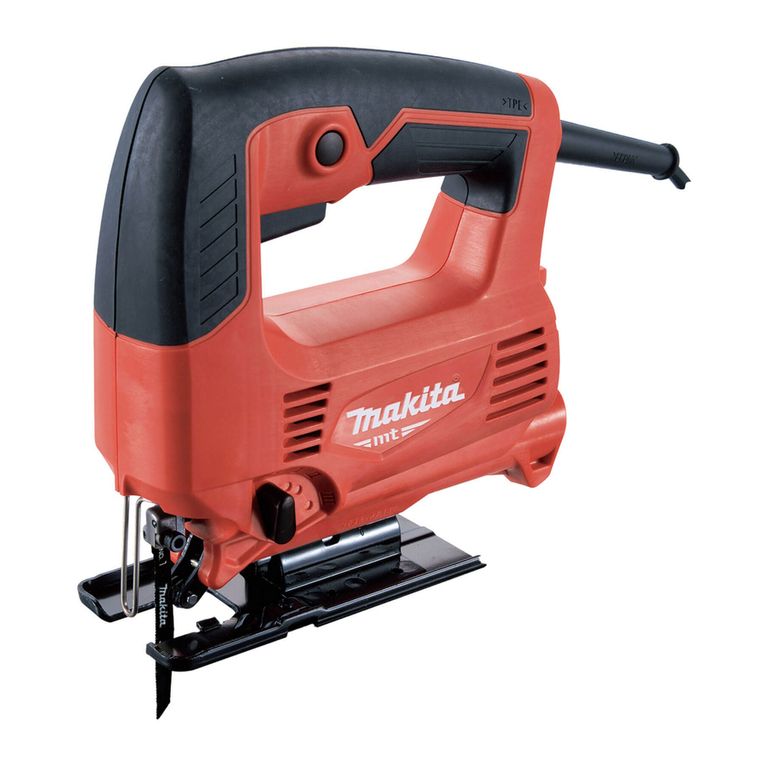
Makita
Makita M4301 User manual
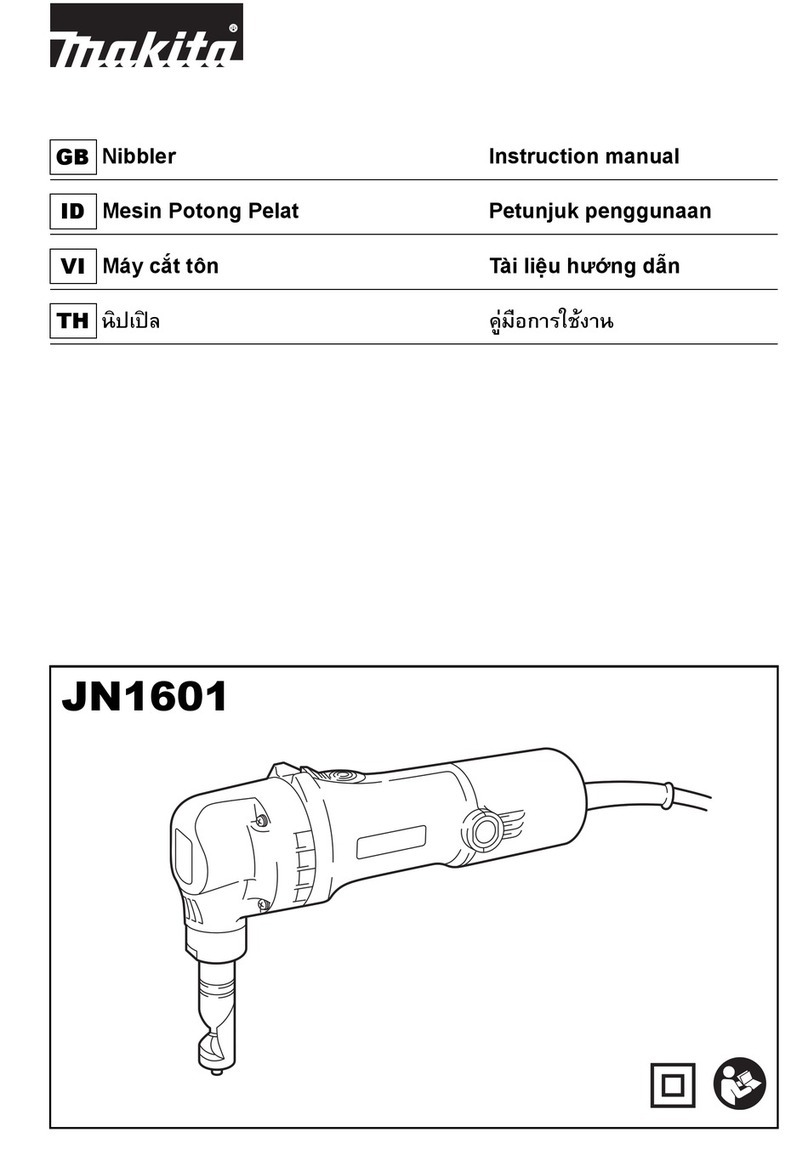
Makita
Makita JN1601 User manual
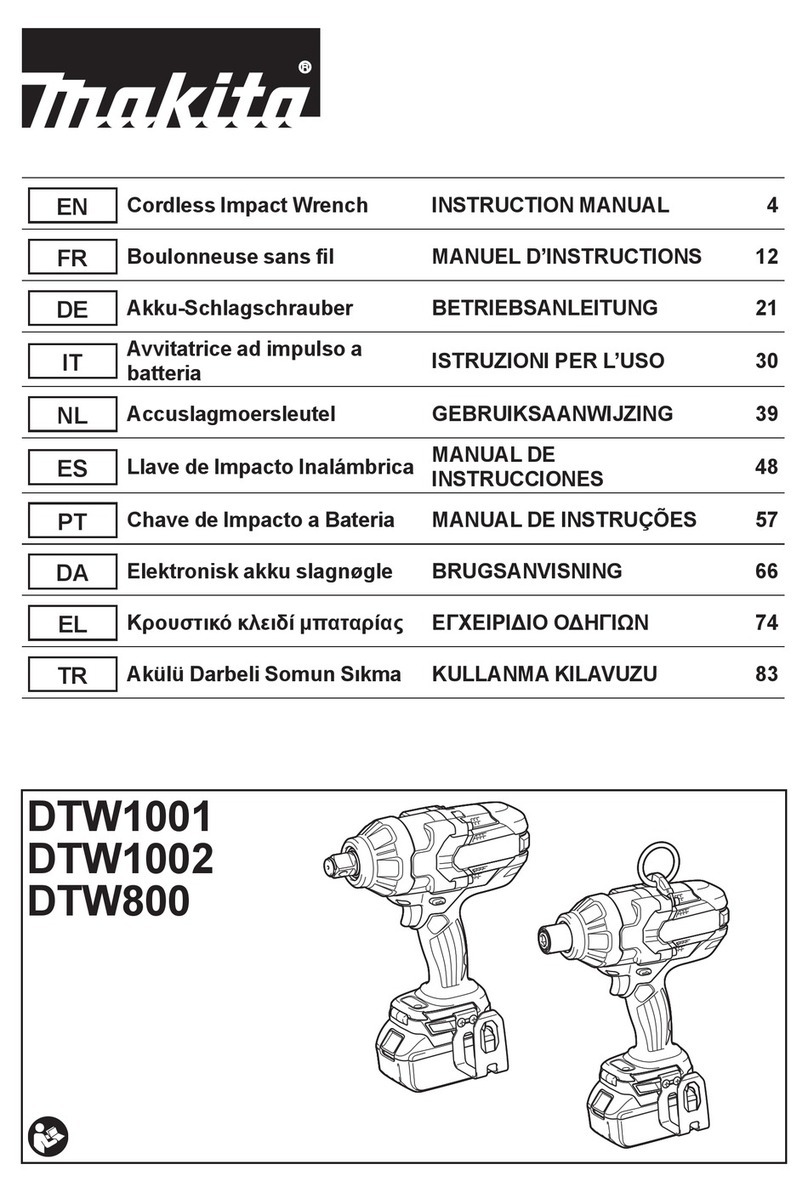
Makita
Makita DTW1001 User manual
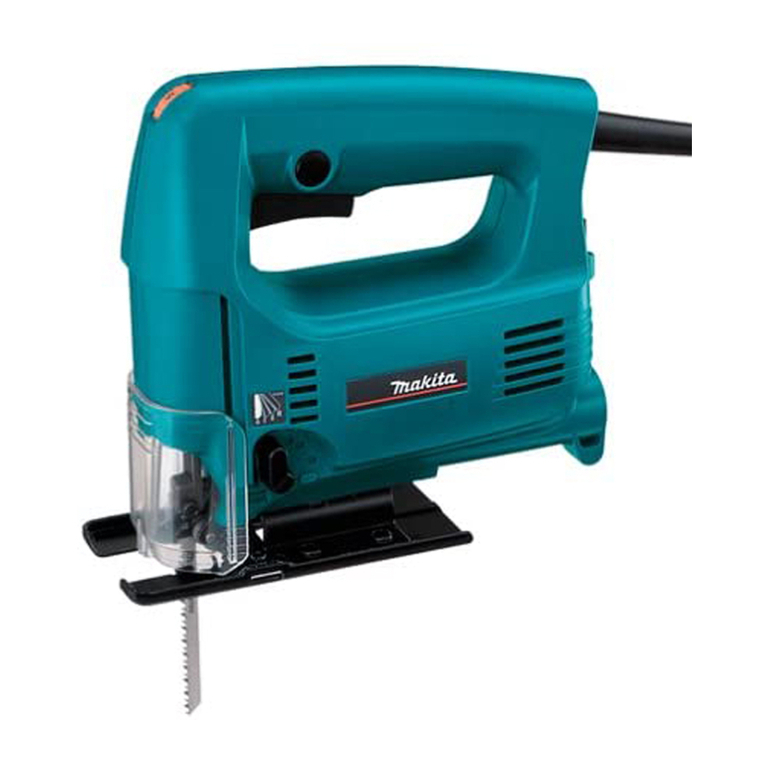
Makita
Makita 4324 User manual

Makita
Makita 6904V User manual
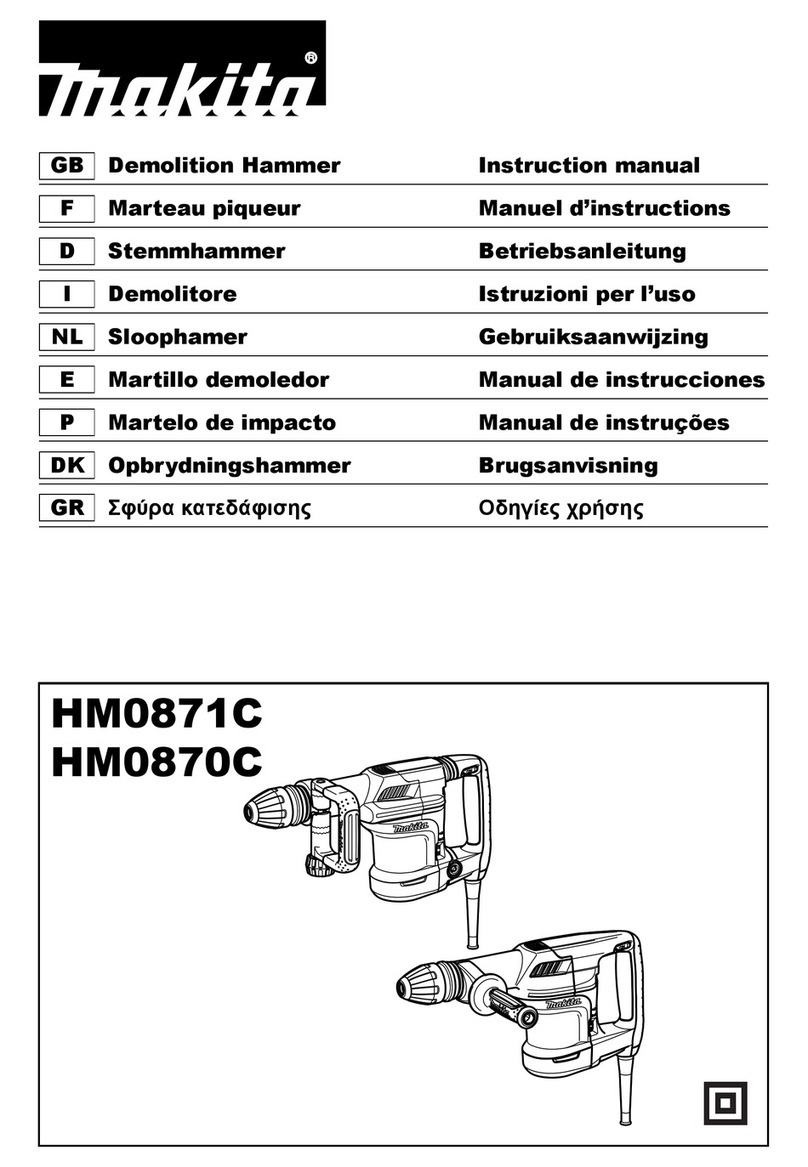
Makita
Makita HM0871C User manual

Makita
Makita Makstar BVR340 User manual
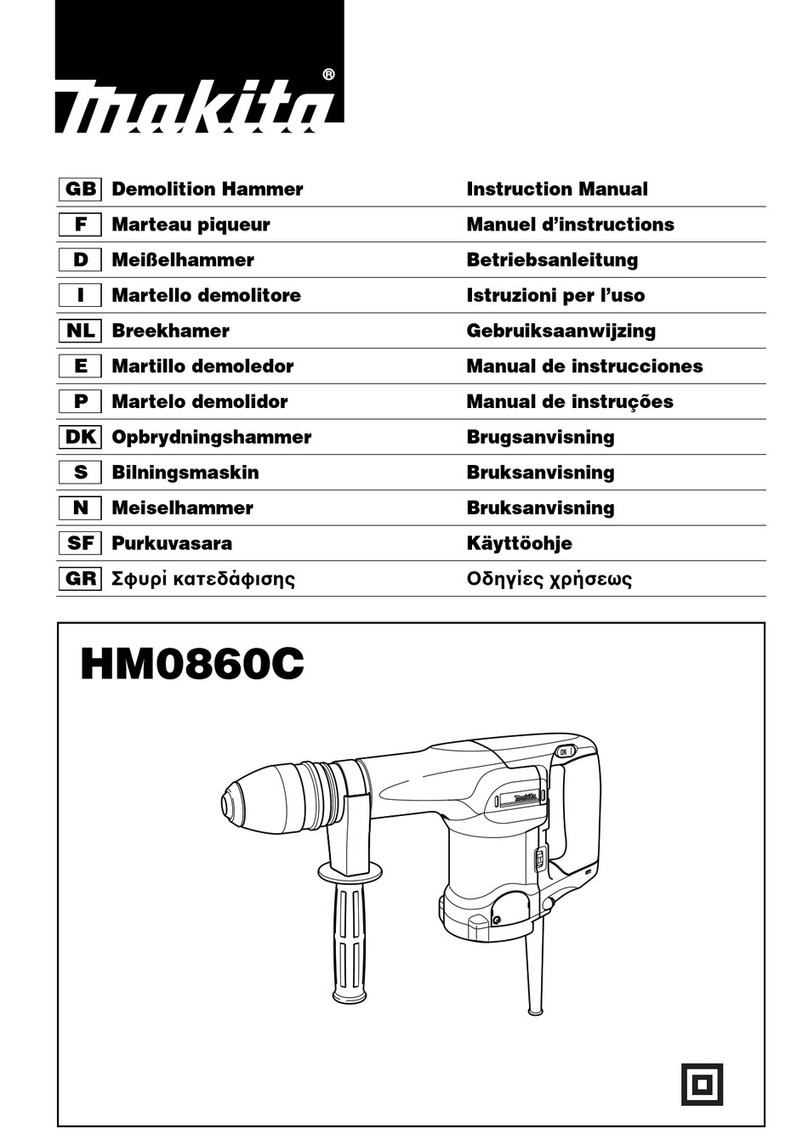
Makita
Makita HM0860C User manual

Makita
Makita DHG181ZJ User manual

Makita
Makita RP0900 User manual
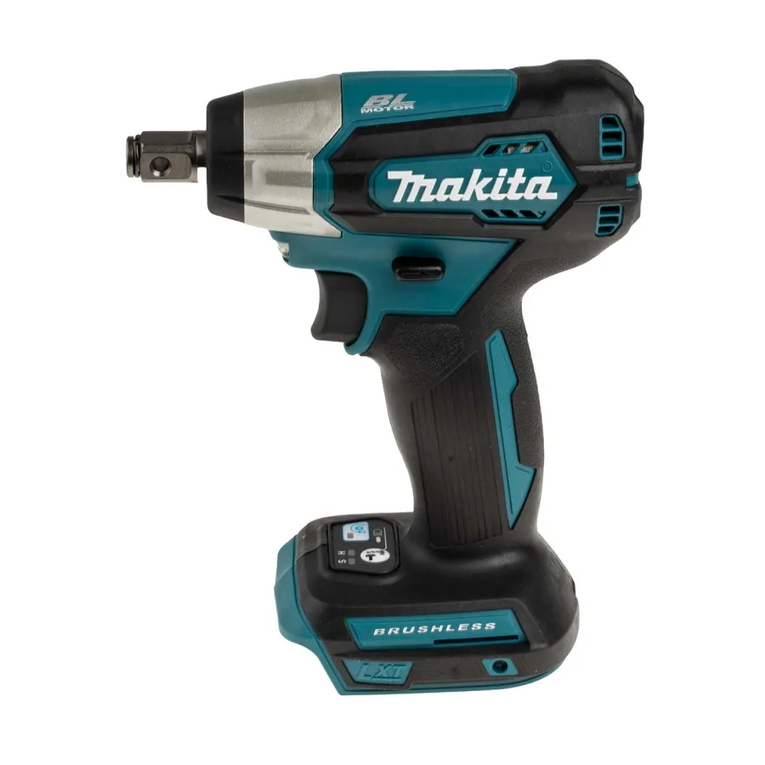
Makita
Makita DTW181 User manual
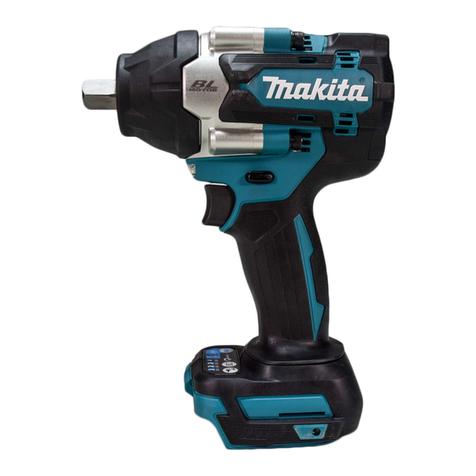
Makita
Makita XWT17 User manual

Makita
Makita BTM40 User manual
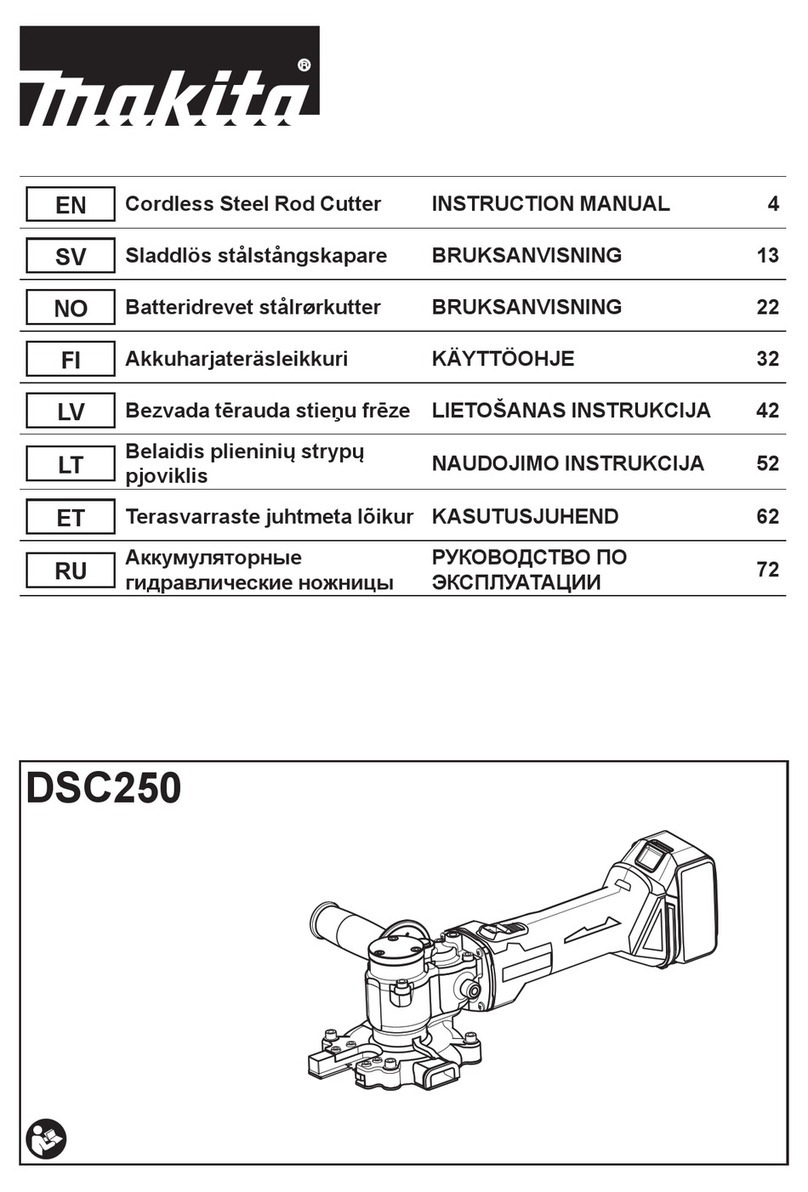
Makita
Makita DSC250 User manual
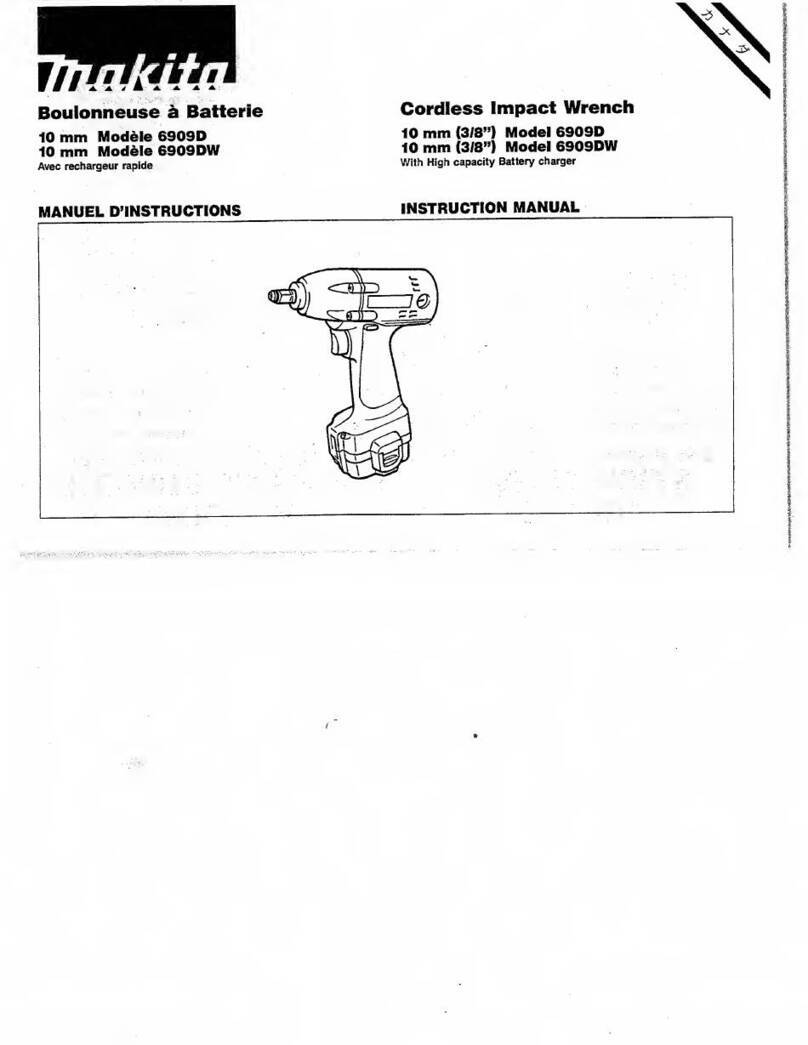
Makita
Makita 6909D User manual

Makita
Makita 4350CT User manual
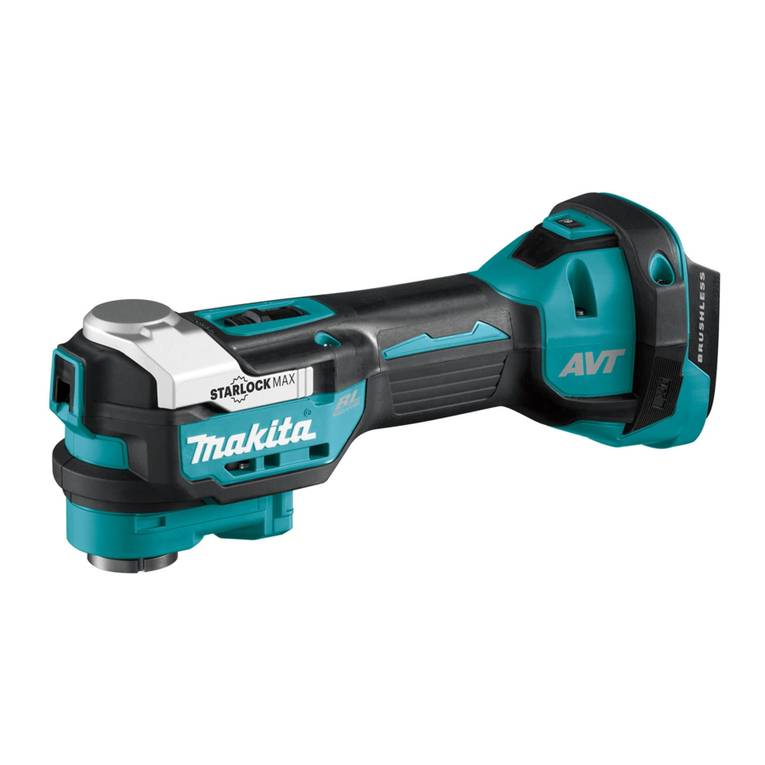
Makita
Makita DTM52 User manual
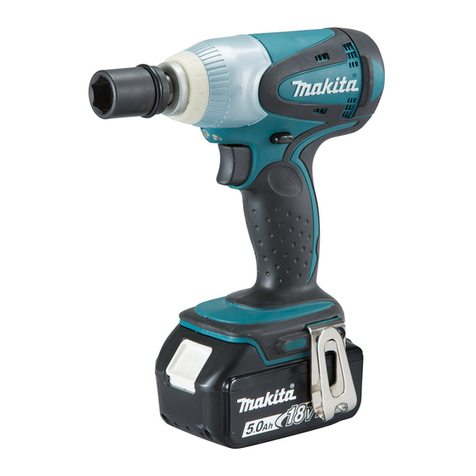
Makita
Makita DTW250 User manual

Makita
Makita BJS130 User manual
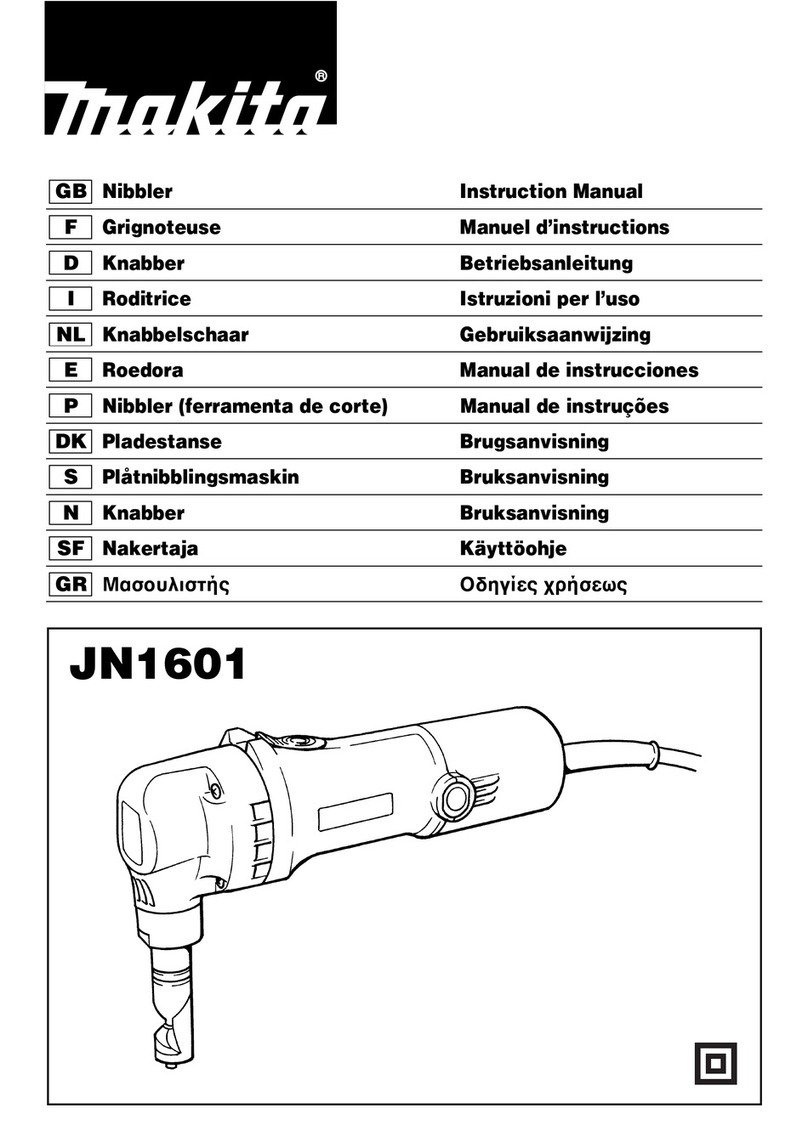
Makita
Makita JN1601 User manual
